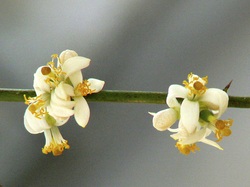 Day 282 in Mozonte/Ocotal February 25, 2013 The lemon blossom is out on the tree in the yard behind the little house I rent in Ocotal. There are still a few, straggling lemons on the tree from last season, but with the appearance of the blossom and the bees drinking their fill of nectar, I am reminded that I arrived just as the lemons were forming on the trees last year, and I am fast approaching a complete cycle of this country's seasons, albeit another 70 days away. 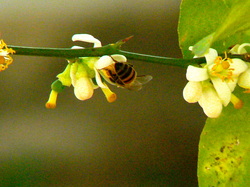 I was also reminded of the passing of time as I watched the Oscars last night, in Spanish. Not that I was even tuned into the fact that they were happening - that fact passed me by in this sleepy, remote town in which I am living at the moment. Normally by the time they come around, i have seen at least half of the main movies. This time, only one, and that probably on an AA flight between Miami and London. "Like a circle in a spiral Like a wheel within a wheel Never ending or beginning On an ever-spinning reel" 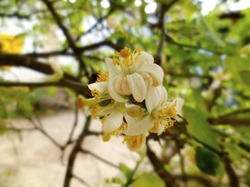 When they brought on Shirley Bassey, I had this visceral reaction as she sang a James Bond classic, not only because she "killed" the song with her amazing voice at the age of 75, but because she took me back to when I was seven and she sang the Goldfinger song for the first time, with my Mother listening in. I felt like nothing had changed and everything had changed, and I felt both torn apart and elated through her voice, as rich and as gutsy as ever. This is coupled with a sense of being both connected and disconnected here in Nicaragua. Connected to the changing seasons, the impact of Mother Nature on daily cycles and people's lives and the rhythm of plantings and harvests. and disconnected from the world's affairs and crises of other places. 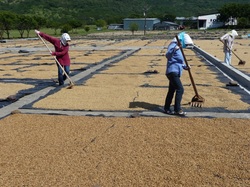 It's the coffee harvesting, drying and processing season. I have a completely different appreciation for coffee, having walked the hills where it is grown, knowing that a person harvesting coffee (adults and children) will earn about $12 per day for back-breaking work (about the price of two lattes at Starbucks), and that the beans are sun-dried on the ground that I walk past every day. Which gets me thinking about how we are so much more connected and yet disconnected from the roots of almost everything we eat, drink, wear and use. And I wonder what is lost in this super-connected/disconnected world and how (if it is even possible) to disconnect people from over-abundant, superficial experiences and reconnect people with three-dimensional, visceral experiences which come a little less easily. 2013 Tobias Leadership Conference Being connected is really at the heart of a presentation I am making at this year's Tobias Leadership Conference in Colorado. This week, in fact. I am speaking about learning transfer in my limited expereince here at The Leadership Institute of Las Segovias. I will be basing the content of my presentation on experiences with three of the projects that will be presented at the conclusion of a diploma course in Social Enrepreneurship. Sadly we lost two of the teams to other pressure of life and work, but retained three powerful and completely different projects. 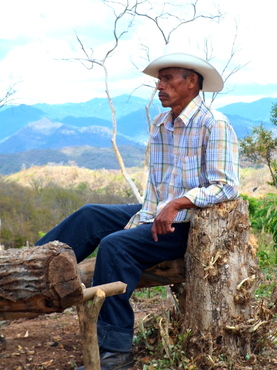 Group from Mozonte This is a project in which the group arranged to exchange new, plastic kitchen utensils (washing-up bowls, dishes, beakers and coffee cups) for empty and dangerous agricultural chemical bottles (herbicides, antibiotics and other animal and plant chemicals). The group leader had inspired 14 families in a remote agricultural community to collect the empty containers from their environs, their patios and fields and bring them to a make-shift meeting space in the open air, under a majestic tree for shade. With a $100 of plastic utensils and the hire of a pick-up trip for the outward bound journey into the country (about 1.5 hours on foot - we walked back), the group realized phase I of their project. Subsequent phases will include the creation of a recycling program, training in alternative agricultural practices and replication of this project in other farming communities. See the entry under December 9, 2012 for the beginning of this project. Hover over each picture for captions. Group from PMA By far the largest group (13 people) in the diploma course, this group's project is also the biggest in scope and vision. Increasing the presence of women in leadeship positions apparently doesn't come cheap. Compared to a modest budget for the previous group (in the $100s), this group has a bold 2-year plan for over $300,000. I have not been deeply connected with this project, so I have no photos nor can I comment on a first-hand basis about their project. However, it does not escape my notice, that the grouped backed by an enormous NGO (World Food Program) has presented the biggest budget. I have some thoughts on this, but better to comment on that in a blog separate from this group's hard work. 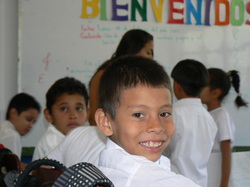 Group from Ocotal, Totogalpo and Diplito School meals and school snacks are influenced by excellent laws forbidding the sale of processed foods and commercial soft drinks on school grounds. However, this is woefully inadequate against the powerful influence and advertising dollars of local and multi-national soft drink companies. Even harder is influencing the eating habits of the parents. However, this group has taken on the daunting task of educating one specific classroom of primary school children. Since the group's leader has his child in the class, there is a deeply personal connection to the project. 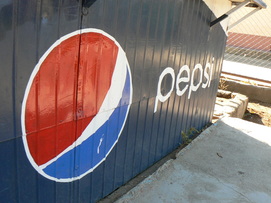 The group plans to create a community garden within the school grounds and use this not only as a way to grow vegetables, but use it to model organic growing practices and help the students "connect" to the source of their food. They will work with the classroom teacher, parents, a local NGO and even the school snack shop to shift the needle on eating practices in this group of children. It wasn't lost on me the irony that the school snack shop built with money from a major software vendor is currently forbidden from selling the beverage. All that remains to be done now, is to sponsor a mural to cover their powerful advertising on the side of the shop - a hang-over from the pre-law days. And this is part of their plan as well! What will not be so easy is to deter the non-sanctioned vendors in the street outside the school fence from selling what is forbidden within the school grounds.
0 Comments
Day 198 in Mozonte/Ocotal December 10, 2012 In the institute we work with three or four distinct populations, often blended within one group:
I had thought (and am still thinking, though not too aggressively) that the institute could usefully write a book on youth leadership - not about leading youth but about young people as leaders in their communities and in their community, political and social organizations. Despite the fact that there are few secular youth leadership books (our religious brothers have the market pretty well covered), I continue to vacillate, aware that young people in Nicaragua seldom read books (!) and because I inwardly groan when I pick up another "The X-Principles of Leadership" on the "bestsellers" shelf in a bookstore at the airport. I have always made it a point to try not to be run-of-the-mill (sometimes it worked and sometimes it got me into hot water) so I am not about to start with my first foray into co-authoring a book. And yet I have this dream. To bring together for-profit and non-profit leaders in week-long (or longer) retreat-like seminars where we could forge a new brand of conscious leadership. One that values diversity, that celebrates and embraces local culture, that recognizes the value of the arts, that sees the downside to homogenization and global brands (aka. Starbucks and McDonalds) and looks to balance the expectations of market-driven systems and share-holder value with the impact the various constituents related to the organization (be it vendors, suppliers, employees, surrounding community, etc.) and the environment. And I don't just mean a public relations piece on "corporate sustainability." I even have a model. OK, so it's not too fancy but on a volunteer's budget, this is as good as it's going to get until I can find a way to pay for some expert designer to fiddle with it. Nothwithstanding, it demonstrates the inter-connected nature of three dimensions of leadership, irrevocably intertwined like the triquetra that inspired this design. SInce the symbol is connected with the King James bible, paganism, Led Zeppelin, Dungeons and Dragons and the Democratic Party of Canada, it may be well be over-used and more run-of-the-mill than I want to admit to. But here's why it works for me:
So the idea is far from complete, it is anything but comprehensive, but I think it fills gaps in current leasership thinking. Or don't you agree?
All I know is that change won't happen form the back but well-meaning seats of non-profit organizations. Governments are increasingly puppets of big business. So unless leaders of big business "take the lead" we have no hope of slowing or reversing the current polarization of rich and poor; of stemmig the tsunami of consumerism; of challenging the homogenization of the "local" experience; and from disconnecting people from each other through technology (think texting the person in the cubicle next to you) and their impact on others (think drones). Let me know what you think. Just another left-winged Polly-Anna dreaming the impossible dream? Tell me. 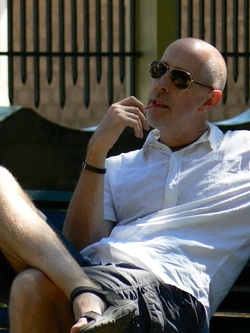 In Ciudad Antigua, Nicaragua Day 197 in Mozonte/Ocotal December 9, 2012 Tell me, I’ll forget Show me, I’ll remember Involve me, I’ll understand Unwittingly, I was guided by this old Chinese proverb from an early stage in my career. However, I was introduced to it late in life, courtesy of The Ariel Group, as a standard reference to explain the use of experiential learning in teaching leadership presence to adults. Way back when, I worked in hotels, mostly in training and development, often in opening hotels overseas. 31 years in total, since the age of 18. And I always worked alongside the people I was supporting, with them, in the trenches so to speak. At least as much as I could do as a visiting trainer. I have no illusions. Flying in, experiencing what I could in 6-8 weeks, and flying out is very different from doing a job 5 days a week, 50 weeks of the year in exchange for a local wage. But I was committed to co-authoring solutions with people that worked for them, and I knew I couldn't do this from 30,000 feet. I think I was influenced early in my career by hands-on managers I had worked for, people who would roll up their sleeves and get stuck in. Not always the best method of "management", but it felt right to me. And I always remember the president of the company I worked for. Like Henry V the night before the big battle in Shakespeare's play, he would wander the hotel alone, unknown to many people, and open fridges, walk the back halls (the back stage areas) and see what was behind the show created out front for the guests. This gave him enormous insight to what was really going on and satisfied his desire to be "involved" (much to our chagrin sometimes!) 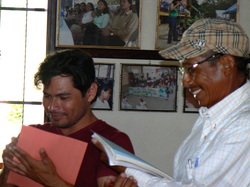 Two participants in the diploma course And so, this approach to working in hotels has followed me here in my activities at the Institute...to a project I am supporting: a diploma course in social entrepreneurship over 10 modules and a period of about 6 months. Working with two of the institute's faculty, we have explored ways to transfer the knowledge from the classroom to the respective communities of each participant - making sure "the rubber hits the road", so to speak. To do this, five groups of people, grouped geographically into regions or clusters of municipalities, are working to develop detailed plans for a project that could be realized in their communities. Plans that they will need to defend in presentations at the end of the course, in March 2013. At least that's the requirement of the diploma. The ideal, of course, would be to bring these plans to life. So in the meantime, we are working to keep them real and feasible, and not just another intellectual exercise. 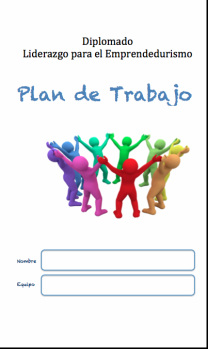 The booklet created for their projects The five projects cover a broad range of subjects: Group from Mozonte How to collect and destroy the plastic bottles used to deliver dangerous agricultural chemicals and animal treatments that litter the countryside around Mozonte. (More about this later) Group from PMA PMA is the Spanish mnemonic for the World Food Program, and this group of students has chosen to focus on increasing the number of women leaders among the producers of crops as well as in the cooperative offices that the PMA's project funds. Group from Ciudad Antigua How to promote their historic town as a tourist destination to create more income for the town. (More about this later, as well.) Group from Ocotal, Totogalpa and Dipilto How to promote and provide healthy food to children in the second grade of a primary school in their community. Group from Quilalí Create a small cooperative lending scheme, providing micro-loans for women entrepreneurs in their town. In working working with these groups, I am employing my usual modus operandi as a way to be able to support each group. "Involve me and I understand." 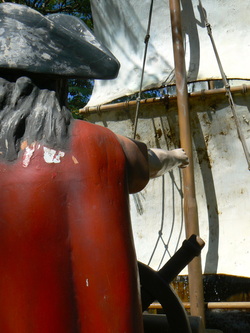 Fountain memorial...yes it´s a pirate! Beginning with the group from Ciudad Antigua. With a couple of friends, we visited this historic town about 15 miles and 75 minutes from Ocotal. It takes a bus to get there (an old, recycled American school bus) and a taxi from the main road down a dirt road to reach the small town of about 1200 people. The original site of the city was populated by the Xicaques Indians before the town of Ciudad Antigua was founded in the 1530's by the Spanish invaders. In 1654 British pirates led by Henry Morgan invaded the city (a first of many times) and burnt it to the ground, killing many of the inhabitants. Once the capital of this area, the city never regained its importance, with most of the people and the center of control moving to Ocotal. We visited the town on a Friday and a day before a public holiday. The town was quiet, positively sleepy. We started at the church (closed for lunch) and moved into the park.
Done with the park, we wandered through the small town looking for somewhere to eat lunch. We visited five recommended places, each one recommended by a local in the street. None of them had any food, although one of them would start cooking later in the day, if we wanted to wait. Other than one half-hearted offer, none of them seemed interested to make the effort to help us out or offer to rustle something up. As a tourist, this lack of enthusiasm to welcome us tourists was not a good start to the project, especially since two of the places were behind small stores with eggs, rice, beans and other staples. Clearly our experience demonstrated why the project is needed and the team has its work cut out for themselves. On the other hand, the church is impressive, once the doors were opened after lunch. Much of it dating back to the 17th century and beautifully maintained. Next door, a small store selling sacred images, objects, rosary beads and statues. Behind the church a small building containing the remains of the original church destroyed by the British pirate, Henry Morgan (I think that´s what the building contained - the old memory fails me sometimes!) There is also a very small museum that was closed when we went. Moving on to the group from Mozonte. We visited Santa Rosa, a community of 300 people within Mozonte, with two students from the group (the others cried off sick at the last moment). This involved a 15 minute cab ride to Mozonte, a 35 minute bus ride to Santa Rosa and a 40 minute walk along an unpaved road to Santa Rosa. Fortunately we were saved the last 20 minutes with a ride in the back of a pick-up truck. Arriving in Santa Rosa, we met with a community leader, one of the other members of the group and walked out with him along a dirt path for another hour to a remote community of houses in Varillal in the heart of the hilly farm country. With temperatures of about 30C (90F), little shade and dusty tracks, we had our work cut out for us. Our trek into the depths of Las Segovias country was to document the problem for this group - our cameras taking pictures for their project. We were looking for evidence of discarded chemical bottles that had been used in treating crops (pesticides and herbicides) and animals. These bottles are left lying around for children to play with and contaminate not only the water but also the environment. The chemical bottles we found were mostly chemicals manufactured in China, the UK and the US, and almost all of them contained warning labels and the dangers if handled by children or careless adults. And yet we found piles of these bottles just outside the community of houses and in the yards of the houses themselves, often cut open to be used for other purposes, and within easy reach of children and pets. The sorts of chemical bottle we found included a vaccine for antrax in cattle, a vaccine for salmonella in cattle, a herbicide known to be a neurotoxin, another herbicide on which the jury is still out in terms of its toxicity, and others. While in the community, we had an impromptu meeting with a few of the families to talk about the problem. They see the problem, pointed to bigger problems with the overall quality of the water in the local streams, blamed others further upstream, blamed the local government...and agreed to work with the project team to begin by cleaning their own backyard (literally) of these bottles as a step to begin to take control. So we left with a sense of the problem, with a few ideas of theirs and a lot to think about. But that's all for now. More of these and the other projects in future blogs.
Clearly involved, I was powerfully impressed by both visits for very different reasons, appreciating what the students have to go through to complete their projects (never mind attend the diploma workshops every 2-3 weeks). And I was reminded of a quotation of Robert Valett that builds on the old Chinese proverb: "The human heart feels things the eyes cannot see, and knows what the mind cannot understand." Visiting each location gave me the chance to get involved, if only for a moment, and had given my heart the opportunity to "experience" first hand the focus of both projects. I was touched, and saw and understood much better.
Day 181 in Ocotal/Mozonte November 23, 2012 The Institute is sponsoring three murals, one here on the grounds of the Institute and the other two in the neighbouting towns of Mozonte and Quilalí. Clearly the opening quote has little to do with either murals or the photos above. But it is poetic and touched a place in my spirit with its focus on the purpose of "art". The three murals, painted by local young people under the guidance of a few adult artists, focus on the themes of how to move out of poverty, how to take care of the environment and how to being about equality between women and men. Lofty goals to be sure, but charmingly executed under the invitation of the United Nations and their slogan: "Taking part in this work, brings color to our dreams" - a program to support local artists. 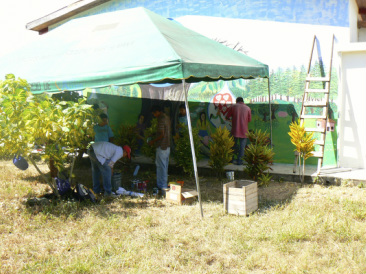 Mural sponsored by the United Nations, one of three There is a Britishly cynical part of me that imagines the time and money that was spent coming up with the slogan; around a well-polished marble table in an air-conditioned conference room, bottled water, coasters, and thousands of miles from the artists and children working in the open air, only partially protected from 90F temperatures in the midday sun. Only a small part of me, to be sure And there is the other part of me that relishes the fact that these children are getting the opportunity to flex their creativity in a public project for the community, working with talented and caring adults who respect and value their contribution. Sounds pretty close to paradise to me! And I think how this all came together with a few days' notice and little planning, the murals to be unvelied at a ceremony in just 7 days. Two lead artists working three murals. One location about 2 1/2 hours from the others, along a rutted a largely unpaved road. Invitations for the unveiling go out next week (click here to see the invitation), a few days before the event. Everything organized in the blink of an eye. 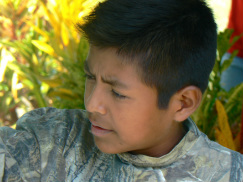 A young artist deep in concentration This ability to turn projects round on a dime is an amazing and hugely admirable ability. And I find myself struggling not to get frustrated by the lack of planning (seemingly completely unnecessary) and by how it all just seems to happen, successfully. It's a feature of how things work or (more exactly) happen here. The electric company needs to install a new transformer on a pole (as they did today) and they cut the electricity without warning for an entire day, not only to one town, but two. It's all perfectly acceptable, pefectly normal and there is a sense of resignation to this - that people have no right to expect anything different. 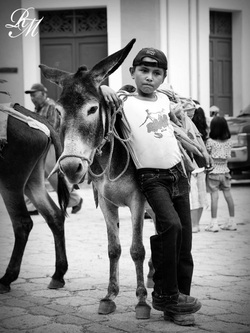 But I digress...I had intended to talk about art...and aesthetics. I am commissioning a local artist to paint a picture based on a photo that is "photoshopped" from an original photo. Third generation copy, with two filters, two interpretations - the photographer and the painter. The photographer, Ramon Moreno. The painter, Pedro Patricio Marin Muñoz. We got to talking, Patricio and I, about art. His style is highly realistic (part of our price negotiation referenced the work needed to recreate the individual hairs on the donkey), and although I don't normally choose to buy painted copies of photos (at least I have never knowingly done so), I wanted his interpretation of a moment in a street where I currently live that had caught my imagination. He was delighted that I was giving him complete license to interpret the photo. I was curious to see what he would do. And this led to a rich conversation - or more exactly my ramblings in limited Spanish - about aesthetics. One of my bug-a-boos is the apparent reduced and often minimal appreciation by many in the world for aesthetics, defined broadly as "critical reflection on art, culture and nature". Call me old-fashioned, but I wince outwardly and cringe inwardly at the plethora of billboards, unsightly cellular phone towers, construction of utilitarian buildings with little regard for any element of "form" in "function", fast-food chain signage and other visual clutter. Yes I am a snob, but in this matter, my wincing and cringing go beyond this. 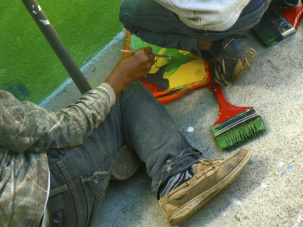 I had used the word "curious" when I told Patricio I wanted a painting and not a photograph, because I was "curious" to see and appreciate his interpretation. And I suggest that the lack of curiosity in one's surroundings and otherness, and an inward focus on oneself and individual needs, diminishes the interest in and ultimately the ability to evaluate aesthetics. On one level, a lack of curiosity leads to intolerance, ignorance and ultimately marginalization of people and groups of people. On another level, a lack of appreciation of aesthetics (i.e. not being curious) leads to global branding (with little regard for local culture or aesthetics), homogenization (which typiclally results in less diversity and fewer creative choices) and a lack of general concern for the environment and our "footprint" in this world. Big. bold, simple conclusions I can hear you thinking. Be they so. When I witness the level of concentration of these children and the creative choices they are being encouraged to make. When I think of the local cultural references that are included in the murals. And when I think that this wall might have hosted a billboard selling some multi-national product, I say "boo-boo". I vote for big, bold and simple any day. Let art (and culture) "help human beings find their own place in the sun"...and let them be curious and let their "place" be aesthetically pleasing. Amen! 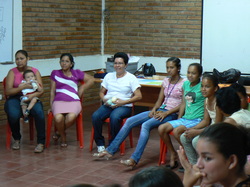 Participants in the August 22 workshop Day 107 in Ocotal/Mozonte 11 September 2012 This is a vacation week in the institute, so I am taking the opportuntity of some downtime to catch up and take a moment to look back and share the variety of activities that have been taking place in the last 21 days in the institute. Partly because there has been a myriad of activities. And partly because I feel I am in my groove...at least this groove for this moment. August 22, 2012 Citizen's Rights of Access to Public Information I | Three of us drive up to Quilali to launch a new program designed to empower a group of community and youth leaders to leverage legislation that allows them to ask for information from local authorities (be it education, health, municipality, etc). 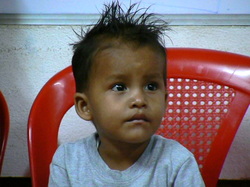 Not quite ready...but willing We are working in the meeting room of the town hall again, and we have a wide range of ages, from a few months (children in tow), through pre-teens, teens and on through middle age. SInce the funder expects the inclusion of children, those 12 and up are invited to participate. If adapting to different learning styles wasn't already a challenge enough, designing for an age-range of some 40 years only "enhances the opportunity", to coin a euphemism. 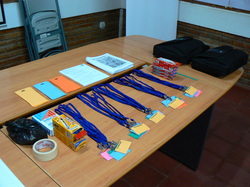 OCD (organization-compulsive disorder) I know I am back in my groove, when I get the opportunity to add to the design of the program. Some of it worked - some of it not - but the biggest telltale sign of my presence was in the prep. Those who know me will immediately recognize my organization-compulsive disorder in the picture to the left! 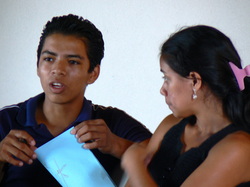 A couple of the young leaders August 23/24, 2012 Diploma in Social Entrepreneurship | Module I of a 10-module program targeting young communitry leaders. We are trying something new - introducing a didactic model to provide the participants with a road map for this extended learning engagement and the various diverse and invited facilitators a framework within which to position their modules. 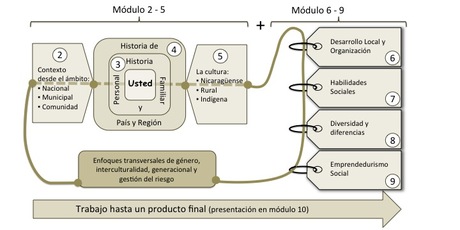 It's a beginning - not as simple as it might be...but a start The first module deals with an overview of the course and a workshop to help the participants connect heart, mind and body with their own leadership potential so that they can begin to develop a vision for themselves. We also introduce a reflection and integration exercise (to be repeated at the end of each module - an idea I stole from Duke University's executive education programs) and an evaluation (also to be repeated at the end of each module - holding us accountable for the quality of the learning experience as well as developing their evaluation skills).  I couldn't find the Baccarat crystal, so I substituted... August 23/24, 2012 One for the Team! | Not for the faint of heart...I decide to tackle making an English trifle...for 16 people at the institute to welcome a volunteer from Spain (not that there is anything culturally irrelevant about making a British dessert for a Spaniard on his first day in Nicaragua - hell no!) And not that the project was without challenges. No custard powder. What to use? Vanilla pudding with more milk than the recipe calls for, or make a custard from scratch. My Mum would turn in her grave if she knew I had opened a box of instant pudding. I make it from scratch: egg yolks, more cream than milk, sugar and something they call vanilla essence. Final product: a little pale but not without a certain richness that would send my cholesterol numbers through the roof if I wasn't balancing this with a diet of rice and beans. I buy the cake from a local bakery (a discussion and a half - she does not understand why I don't want any filling or topping or decoration!) And then the soft fruits...none to be had, just cans of fruit cocktail - a luxury all the same here, where the most common fruits are pineapple and bananas. Oh and then the sherry. Not a cat in hell's chance! So I venture to substitute a sweet cooking wine. Bad idea! So I move on to a raspberry sauce. Equally bad idea - a clear liquid that tasted of nail polish remover and smelt like something much more insidious. So I settle on a sloppy cherry jelly. Ah...the joys of substitution! 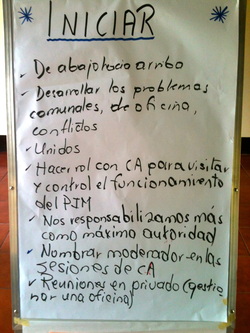 August 28, 2012 Grass Roots OD Consulting | I am not an OD (Organizational Development) expert, though I have dabbled on the fringes of this fascinating subject. However, this workshop (the first over a few months) is to help an Indigenous Elders Advisory Board ("Consejo de Ancianos") in ways that was clearly an "OD intervention". The resolution of indigenous land disputes and the transfer of land rights is overseen by this board of elders, who are the only people who really knew what land was whose before the revolution of the 80s. This board advises the local municipality and plays a mediating role in disputes. This group of community leaders is divided into two camps. One group aligned with an ex-president of the board who is running for political office and is therefore more closely aligned with the municipal big wigs, and the other (the "elders") which is more closely aligned to historical rights and the history of the area. So we pull out some old left-brained OD chestnuts (e.g. what activities to stop-start-continue) and combined them with more right-brained, experiential activities (e.g. a sociometric exercise using a ball of wool and visual metaphors of their vision of success for the board.) It was a start. 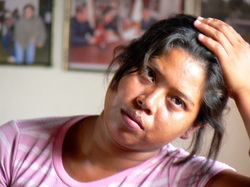 The sessions can be demanding... August 29, 2012 Monthy Meeting with Sponsored Students | The institute sponsors students at secondary, technical college and university level, providing much-needed funds for their transportation, books and fees. Faculty from the institute meet with the students regularly to see how things are going, maintain a connection, follow-up on the community work projects and add to their arsenal of leadership skills as community leaders. Though generally younger, there are some mature students. We use a video of successful women community leaders as a structured, self-reflection exercise to help the students identify leadership qualities relevant to their culture and community and to spark their imagination about what their leadership style might look like 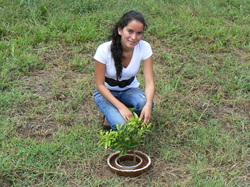 Bessy Cisneros August 31, 2012 Video Testimonial of Sponsored Student | As part of a bigger initiative to raise money for much-needed student scholarships, we are creating a series of short testimonial videos of recicpients or deserving students. Bessy is a delightful student who is a perfect candidate to begin this initiative. There is a strong focus on the environment and every student plants a tree as a metaphor for the connection between their leadership and environmental stewardship. You can see the finished product (in Spanish and with English subtitles at this link: Bessy Cisneros.) 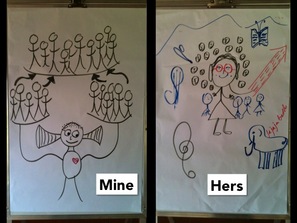 ...well it made sense to me when I drew it... In the spirit of "horizontal learning" (the institute's methodlogies are significantly influenced by Freire), the facilitator and I modeled the finished visual metaphors with our own drawings - fortunately demonstrating and reinforcing the range of possible approaches (and artistic capabilities). There is more later in this blog about the sponsorship program. 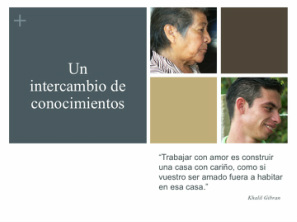 Opening slide of my presentation September 3, 2012 Working with the Faculty Team | I am to meet with the faculty team each month for 1-2 days to add to their arsenal of facilitation and training skills. In Spanish! This was the first session and it was my opportunity to do two things: brainstorm a student sponsorship program I am co developing with them and to share my vision for the footprint I want to leave here at the institute during the next 6-18 months (i.e. as long as the work interests me and they will have me.) I found a great quotation from Khalil Gibran that I used to open my presentation: "To work with love is like contructing a house with care, as if your loved one was going to live in that house." It sums up the footprint I'd like to leave behind. We spent about 5 hours brainstorming how to develop a student sponsorship program (a much-needed program to replace some $20k that will not be available in the future when a major donation is used-up.) And the rest reviewing my vision:
The last I see as a real struggle in development work, based on my very limited exposure here in Nicaragua. 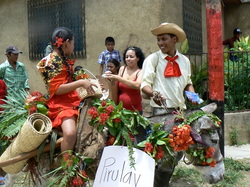 A happy donkey and a happier owner September 5, 2012 Meeting with the Commission of Las Segovias | I have been voluntold into the local "Commission of Las Segovias" - an organization run mostly by wealthier Ocotal residents to promote the area, the culture and increase awareness of the region's rich heritage. You may remember my blog entry about "boxers or briefs". The donkey on the left was one of the honorees of this "Parade of the Donkeys". We are planning a fund-raiser in Managua on October. I will be travelling to Buenos Aires to earn some money to pay for my adventure here in Ocotal, sadly. They will be enjoying an evening of traditionl music, dance, poetry and culture from Las Segovias. The goal? To raise awareness about the area. To reconnect people who have left the area for the big city, Managua. And to raise money to buy Christmas presents and a meal for poor children and prisoners. I will be designing the exhibition of photography that tells the history of the area. They, unwittingly, are going to let me loose with their photography archive that goes back eons - something they may yet come to regret when a "gringo" tries to interpret the history of the area that was the breeding ground for the rebel forces in the Sadinista-Contras war of the 80s. 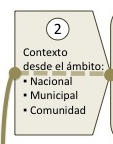 August 23/24, 2012 Diploma in Social Entrepreneurship | Module II brings in a Professor in Sociology from a university in Managua to put their study of social entrepreneurship into a context as seen through the lenses of community, municipality and nation. We used the model to position the second session in the overall learning journey and the reflection and integration exercise introduced in Module I to continue the through line and tie the learning back to the central themes of gender, generation, cultural integration and risk-taking. We also evaluated the module to make sure we hit the mark with the participants, as part of a larger program-evaluation initiative that is tied into helping the faculty team balance the needs of funders with the needs of the participants and community. I anticipate the evaluations to dip in numeric score over time, as we develop a critical eye in the participants and shift them from "happy recipients of yet another training" (and the obligatory meal and breaks) to citizens who are capable, willing and effective at evaluating the work of others. Lofty goals to be sure, but think of it as the little toe in the footprint I am hoping to leave behind! 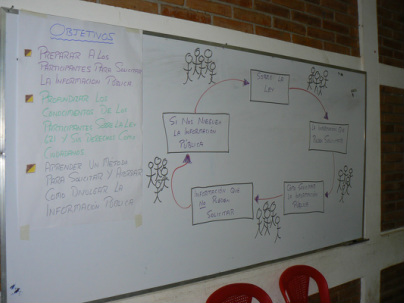 THe flow for a central exercise - that more or less worked... September 7, 2012 Citizen's Rights of Access to Public Information II | The continuation of this program was both a challenge and a success. Challenging because of the range of ages contained within group. And a success because we continue to make small improvements in discipline, focus and engagement as we try out alternative training techniques. 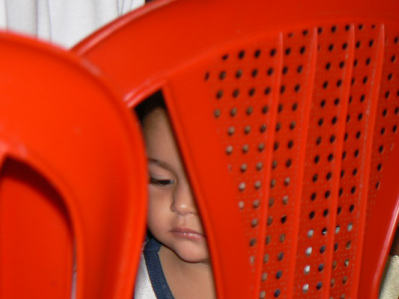 One participant we couldn't get through to...however hard we tried... Not bad for 21 days of work... Up next:
 ...clearly briefs... Day 77 in Ocotal/Mozonte 12 August 2012 Today is day 77 of my time in Nicaragua and yesterday was my birthday, also a double digit, and I spent the day helping to sort between 700 and 900 pairs of cotton bikini briefs into 200 plastic bags - one of a number of basic items that had been donated by vendors in the town of Ocotal to supplement other basic food items (such as beans, rice, un-roasted coffee, cooking fat and corn) used in creating care packages for entrants into the town's annual donkey parade. The parade is happening today and I will miss it, sadly, since I am traveling south to teach The Ariel Group's work in Buenos Aires. I wrote about the goals of the parade in an earlier blog (May 30, 2012) and I will publish pictures when I get back. In the meantime, I am imagining the smiles and saucy comments in some 200 remote and simple homes around Ocotal when the farmers share their care package with wives, daughters and the rest of the family. At least that is what I imagine will happen based on the reactions of the five army boys who had been seconded into helping us sort the "ever-so-European" briefs. I got the impression that these would not pass muster in the barracks back on base! Still this little anecdote speaks volumes to the range of experiences and activities to which I am exposed - as m' Mam used to say: "never a dull moment". It continues to feel like I am on the right path, even if it is sometimes a little unclear and obscure. For those that work with angels (and I haven´t), the number 7 " apparently symbolizes humanity's deep inner need to find depth, purpose, meaning and spiritual connection." The number 77 is even more significant, as you can read at this link. And this was the week to have some of this confirmed. 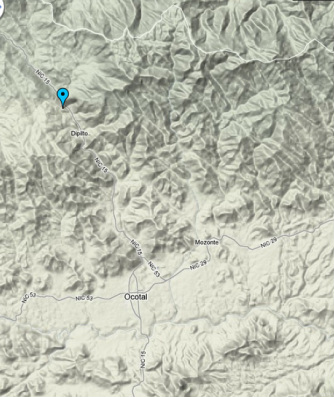 Showing relative locations of Ocotal, Dipilto and Mozonte I have been trying for weeks to meet formally with the Executive Director, but with her outrageoulsy busy schedule and my few commitments just missing the few open slots in her calendar, we have had no luck...until Thursday of this week, when we sat down for what was an important heart-to-heart, at least for me. And at just the right time. I had lost my cool the day before with one of the teaching staff. Not nearly as bad as my outbursts back in the corporate world when "princess" would be a better description of my behavior. But certainly sufficient to communicate my underlying frustration and disappointment...as usual, mostly with my own lack of impact and the slowness of of any change in those or the situations I was trying to influence. Clearly all "my issues". We used a "slow" day to catch up - a day when we were going to celebrate my birthday, the birthday of one of the teaching staff and the arrival of a group of donors from Hartford, CT in the USA - driving up to a coffee farm north of Dipilto (approximatly the marker on the map), closer to the Honduras border (the white line running horizontally along the map to the right.) I came away from the meeting with a clear list of priority areas to focus on and some real deliverables, but I still felt low, introspective and doubtful, in spite of the enormous efforts everyone had gone to to create a special party on the coffee farm. The day was marred only by a lack of electricity, which meant we had to forgo the usual cultural dancing. Not that the lack of music or light stopped the bugs from biting wth a vengeance to match the worst of the worst bug-biting experiences. 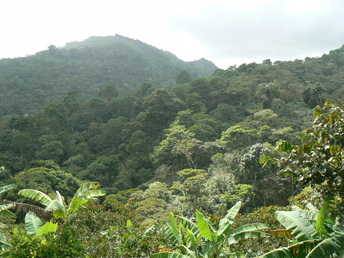 A coffee farm in Las Segovias My mood changed the following day when I had a phenomenal design meeting with one of the teaching staff and a new facilitator, where we all got clearer and clearly excited with some changes to the design of a leadership program we are developing for young leaders as they exercise their rights to ask for information relating to municipal budgets and projects. And then I got to co-translate for the visiting donors from Hartford, CT - a shared responsibility with one of the visitors who was fluent in Spanish - something I had never done before. It felt like a significant step along the long and sometimes tortuous path towards becoming bi-lingual. We met with representative students who were the recipients of their sponsorship - ranging in age from 11 to 20-something. Powerful and humbling testaments to the power of even small donations and the impact they can have on an individual's life. We visited the homes of two of the boys, miles along unpaved, windy, hilly and almost impassable roads - in fact the last 1/4 mile was completely unpassable in the truck we were riding in. These two students were recipients of modest grants that helped them in transportation to and from their remote homes to the closest secondary school, a 4-hour journey on foot. With the money they receive, they are able to purchase and maintain bikes that not only get them to and from school, but that support the family in a myriad of ways. For example, one of the family members makes daily trips to the market (every day except Sunday) to sell her tamales to support the family. 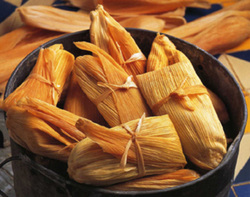 Tamales Making the tamales is a family affair. The men grow the corn, the women shuck, sort, grind and cook the corn into tamales, and one of them sell the tamales...and the boy carries the basket of tamales to the main road every day for his mother. She will walk the 1.5+ miles to the road but the bike, serving double duty, will carry her tamales for the market as far as the road where she can catch a taxi (50 cents to the town). Another boy will carry up to 50 oranges for his mother from their farm, also to sell in the market. We heard how the boys will change out of their mostly-pristine uniforms when they get home to do their other chores (e.g. collecting wood for cooking) while it is still light, before settling down to do their homework by kerosene lights in the home. The uniforms will last three days before they are washed in the little water that there is that will be carried by hand from the communal pump at the bottom of their farmland. Apart from a powerful day rich in experiences, sharing and generous gestures of open-hearted hospitality, what was especially exciting for me was the beginning of discussions about the possibility of visiting Hartford to make presentations about the institute and its work as a way to engage more people in the work they do in the local community in Las Segovias, all towards the goal of raising more money for youth education sponsorships. This feels like a valuable use of my latent skills and one where outcome may be directly related to my input. A link about the institute's work in English can be found here, and on selected other pages of the website by clicking on the language option. 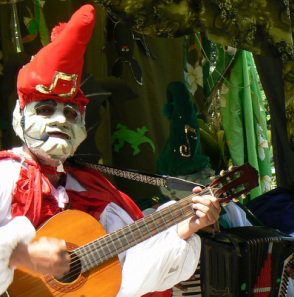 A "gnome" in a social drama about gender equality. A "gnome" in a social drama about gender equality. Day 62 in Ocotal/Mozonte July 28, 2012 A dear friend gave me a copy of The Art of Pilgrimage by Phil Cousineau before I left for Nicaragua. I left it by mistake in the basement of the church where I used to go every Monday evening to be in community with people who inspired me, with whom I felt included and who became my friends. Another dear friend picked up the book for me and made sure to include it with some other things I was collecting on a recent and extravagant 2-day trip to Boston. A long journey for a paper-back book that now sits on the bedside table of my tiny bedroom in Ocotal, Nicaragua. I started reading the book earlier this week, breaking my vow of "Spanish-only" literature to reconnect with something completely familiar - English words on a printed page. Cousineau asks the following: "Are you alive now at home? Are you going to stay in your coffin of mediocrity, [or] break out of your cage, and take a journey to discover this in order to find yourself?" He writes the following of his experience when visiting Egypt for the first time: 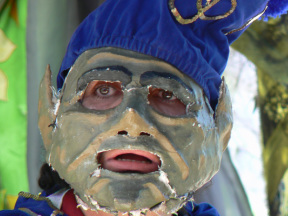 A "bad" gnome in the same social drama. A "bad" gnome in the same social drama. "Something ancient and holy was unfolding all around me. It was what the wandering pilgrim-poet Basho called 'a glimpse of the under glimmer,' an experience of the deeply real that lurks everywhere beneath centuries of stereotypes and false images that prevent us from truly seeing other people, other places, other times." He goes on to say that "Pilgrimage is the kind of journeying that marks (the) move from mindless to mindful, souless to soulful travel...by definition it is life-changing." And change is painful and today I feel the pain...a little sad, a little melancholy. I can think of nothing specifically that could have triggered this, but writing feels like the right way to honor the feeling and give it a form that I can witness. Everything is going well. I am doing interesting work that sits right at the intersection of what should make me happy and what the world needs. I teach my first full-day workshop on Monday in Spanish to the small team here at the institute, a pilot for a course I could teach to young leaders in a much longer leadership development program that focuses on "entrepreneurial leadership," something of a buzz-word here at the moment. I was invited to present one of my "m' Mam" stories at a recent gender conference - in Spanish - to an appreciative audience. I have a perfectly charming place to live. I eat well. I have people to connect with. I have work that pays me handsomely for this pilgrimage. I want for nothing. And yet, I yearn to know that what I am doing is not just part of the problem here and elsewhere in the world. That if "Making a Differece" is one of my values, then why do I not feel "At Peace", my highest value (or at least it was when I last checked in, some 6 years ago!)  A sunset in San Juan del Sur. A sunset in San Juan del Sur. I share my life with hundreds, no thousands of little tiny ants - two or three would sit on the head of a pin, if they would sit still long enough. but they don't. They are everywhere and there is nothing to do but accept their presence. In addition to the usual attractions of a food or liquid, they are especially attracted to my MacBook Pro, a feat of modern engineering designed to be as close to perfect as is humanly possible, even down to planned obsolescence so that not only is it reliable (which makes me happy) but I will be inspired to buy a new version when available (which makes shareholders happy). Nothing has been overlooked, except that these little tiny ants will disappear down the "1,!" key to reappear from the "delete" key and walk across and behind the screen to reappear where the screen hinges with the keyboard. What was a charming "difference" in my first few weeks, now bugs the hell out of me, since I can do nothing about it. No amount of cleaning or sanitizing makes my table or the case of my aluminium laptop any less attractive to these tiny, insidious creatures. So I "suffer" and wonder at my sense of annoyance, my frustration, my questioning...this change of perspective. I feel the pain, an ingredient that Cousineau describes as an essential part of any pilgrimage - the component of overcoming difficulties. And like Cousineau, I wonder if there isn't an easier way! 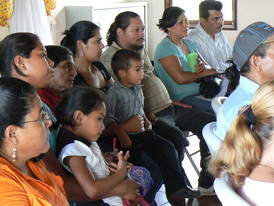 Participants at the workshop on women's rights. Participants at the workshop on women's rights. I think I can trace my "pain" back to a recent workshop on gender equality and the role of women in Nicaraguan society. The day-long workshop ws examining the progress made in women's rights since the introduction of equality laws some 13 years ago. In classical workshop style, a group of 100+ participants had broken out to brainstorm and capture among themselves changes in the last 13 years, noting successes and failures. Four or five groups of some 20 or so people. Groups in Nicaragua are never an exact number. People wander in and out to feed children, change diapers, take phone calls, make phone calls or for any other one of a hundred more important reasons. It feels a little like a street market on a Saturday morning. One person presents their group's ideas, occasionally refering to a butcher-block paper taped to a window or a wall (there are no flip chart stands in the institute), but generally not, tending instead to talk off or around the topic. Given access to a microphone, people love to talk...though few seldom listen. An official from one of the local small towns, stands to position himself as the group's spokesperson, a perfect opportunity to further a political career: an audience of a 100+ and a microphone! As he winds down his canned (but sadly unedited) rhetoric, he graciously introduces an old and indigenously beautiful community leader, elected by the people of her community to represent the voice of the people. She nervously takes the microphone, something she would never have done a few years before and starts to talk. This is clearly progress, and yet... 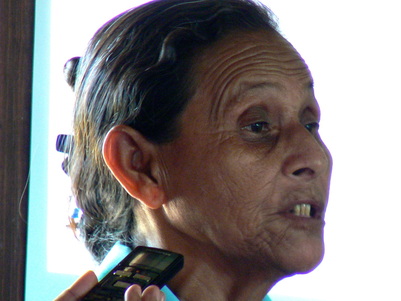 An indigenous community leader. An indigenous community leader. The official chooses to stand up front and center, just to the side of the woman - not taking a seat among the audience - reluctant to release his power position in front of the people. Shortly after she begins, he receives a phone call on his smart phone (price tag $350, what the woman will earn in 2 or 3 weeks.) He takes the call and spends 3 minutes or so talking to person on the other end as though there was no one else in the room. Hanging up, he dials another number and begins another 3-minute call, oblivious to his presence during the woman's presentation. Neither the woman, the audience, the facilitators nor any one of her group seemed disturbed by this act of disrespect. Having just spoken at length about the rights of women and the need for respect in gender balance, he had negated every one of his words with the simple act of receiving and making calls. Was I the only person that noticed this? Was it my own cultural bias that was getting in the way? And why was it bugging the hell out of me (and still does more than 2 weeks later)? And so I got to thinking, and it stirkes me that this seemingly unremarkable experience lies at the heart of my current struggle. Clearly the institute here in Mozonte does incredibly important work, does it with a sense of dedication that is impressive, with few resources and against some pretty stiff political, economical and cultural challenges. And...it struggles like any training organization with the challenge of "making training stick" - of getting the new skills transfered into the workplace (to use corporate jargon). Even making a huge allowance for my own US-corporate-ROI-timeline-influenced bias and my own lack of patience, it looks to me as though there is still room for improvement moving theory to action, as displayed by the official's behavior at the end of this day-long worshop.  Words are mere bubbles of water... Words are mere bubbles of water... There is an old Chinese (or Tibetan) saying: "Word are mere bubbles of water, while actions are drops of gold." In my brief time here in Mozonte and with the few workshops I have witnessed, I have come to the conclusion (which I am ready to have challenged) that there are four components to the learning cycle that I have observed (which I suspect are universal, to some extent or other). And for sure, none of what I am about to say is radically new to learning specialists. The four components are:
So...what I think I am questioning is how not to become part of the systemic problem that exists in this (and I suspect other countries on a development path) - i.e. how best to convert effort into output - bubbles of water into drops of gold - words into action. I have never been exposed to so many studies, investigations, books, documentation, forms and analysises done of problems, communities and what they need. There is no shortage of money and time spent in these activities. I see lots of well-meaning and probably mostly excellent training and "help" being delivered by everyone from established institutes such as this, to "Jesus Teams" coming in from around the world in expensively branded T-shirts worn by terribly enthusiastic young people chaperoned by their role model parents and teachers. And I see slow, desparately slow progress (if any) towards self-sufficiency and sustainability. Just thinking about my choice to involve myself in this "pilgrimage" and that my work are just another component of the same fruitless paradigm is unbelievably depressing. 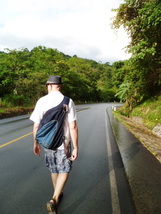 I know that our realizations, feelings and emotions are influenced by our point of view - the frame we take to consider things. But boy, at this phase of my experiencing here in Ocotal/Mozonte, it's hard to find a point of view that buoys me up and brings me joy, to know what to do, where to turn. And so I throw my trust to the experience of other pilgrims and the words of Phil Cousineau: “Centuries of travel suggest that when we no longer know where to turn, our real journey has just begun.” Still knowing and accepting this heady possibility, I chose not to fulfill his other prophecy: "What every traveler confronts sooner or later is that the way we spend each day of our travel...is the way we spend our lives." Ooy vey! 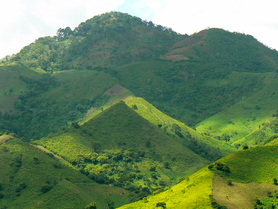 "God's country" - Quilali, Nicaragua Day 40 in Ocotal (and Monzonte) July 6, 2012 Driving back from Quilali, returning from a visit this week to meet with the group of leaders I had met on a previous visit, I snapped the photo to the left. I have described it as "God's country", not because I am religious (far from it - I wobble between agnosticism and atheism, depending on the rhetoric and volume of the religious spokesperson of the day featured in the news) but because I could think of no secular word that hasn't been over-used to describe the majesty and beauty of the hills around this small, remote town. God's country! And it's not lost on me that I am writing this on my 40th day living in Ocotal (and volunteering in Mozonte) - a significant day in the Christian and Muslim faiths. Generally accepted to mean simply "a long time" when the story-teller wasn't sure of the exact length of time, the number "40" is also recognized as being a period of "probation or trial". Noah's Flood, Moses on the mountain, the Israelites wandering in the wilderness during their exodus, Jesus wandering in the wilderness after his baptism and other references in the Bible all point to a period of 40 days. In the Quran, men are only thought to be fully grown and mentally mature after the age of 40 and Muhammad received his first revelation from the angel Gabriel when he was 40. So at my 40-day probationary self-evaluation: where am I, what have I achieved, what have I learned, what have I contributed. One of the strange things about being a "volunteer" is that no-one seems to evaluate my work (at least not formally - I have no doubt there are some "water-cooler" conversations - not that anything close to a water-cooler even exists in the institute). But before I go on, let me tell you a story... 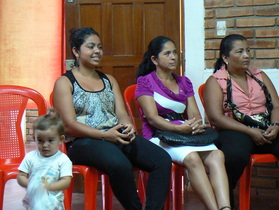 Community leaders (and dependents!) in Quilali It's a perfect, sunny day in what is usually the rainy season but despite the sun, the air is cool due to the height at which Quilali is situated and the breezes gently bring the scent of wood-burning stoves up the hill to where we are working. It couldn't get much better. We are in the meeting room of the town hall again, meeting with 12 community leaders to complete their training in "How To Conduct a Social Audit" - a form of citizenship training designed to hold the local municipality accountable for their promises to complete projects included in their annual budget. The group have completed a social audit of the installation of a potable water supply to one section of the town - some 20 years in the making and at last finished. The session is tedious as the facilitator pulls the information out of the group to complete a form that summarizes the social audit that is to be presented the following morning to the town council. Mostly completing the form for them, she drags the reluctant comments out 4-5 people in the group of 12. The others sit by listening, feeding babies, texting or talking amongst themselves. I detest group-writing projects in any setting and I struggle to stay even partially present. My mind wanders off on a journey that analyzes and finds fault in everything with the session. When I am asked a question by the facilitator to bring me into her role, not only do I not understand the question (my brain has been working in English and the switches don't move too fast!) but I don't even hear it. I am one sour and reluctant participant. 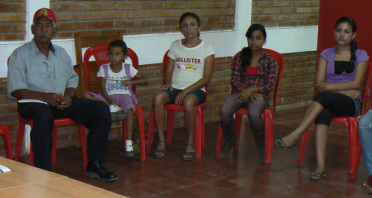 Community leaders (and dependents) in Quilali The session comes to an end with the usual meal of chicken, rice, beans and fried plantains - and there are some comments from the participants about the value of training, how much it has helped, how it has moved the project forward, how they feel more confident, about their ability to speak up. I am not convinced...still mired in some theoretical paradigm of the perfectly designed training session. We get back in the pick-up for the homeward journey. We are loaded up with bags of locally grown, roasted and ground coffee, a live chicken tied in the back (shortly to become soup for the facilitator), bunches of plantains and bananas - all a third of the price up here in this rural town of about 17,000 people. And the facilitator turns to me in the car with a smile about a mile wide, beaming with the success of the session. She hands me a fresh tortilla (thicker and less-uniform than those we find in the US), with the smell of smoke from the wood-fired stove where they were cooked, and a hunk of fresh cheese, made that morning - white, salty and different. She calls her colleague in the institute and glows as she tells her of the outcome, both agreeing that this should be used in the future as a case study for why their methodology works. She is clearly pleased. I turn to look out of the window and snap another photo of God's country, realizing that I was missing the point, that I had missed the point all the way through the morning, that I had failed to change my lens. 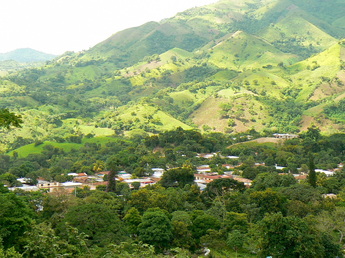 The town of Quilali among the hills of Las Segovias So where am I, what have I achieved, what have I learned, what have I contributed. And more to the point, how do I learn to change my lens while still staying focused on what I can bring to the table? At my 40-day probation, I continue to vascillate. Between moments of serenity and presence when I slow down, breath, see and hear what's around me and discover a sense of the possibilities for what I can and I am doing here. And moments when I wonder if I will ever really speak Spanish, if I am making a scrap of difference, if it even matters. Part of the problem is the context in which I am volunteering at the institute. Working in a country that survives on volunteer efforts, subsidies, discounted oil, handouts by the ship load, "Jesus teams" from the US and a revolving door of people coming in to do good, help, make a difference and learn something along the way. My in-the-moment thoughts (which are almost never the most reasoned or balanced) are that the people coming to help actually take away more than they leave behind, in terms of their own growth, photos, entries in blogs, stories and an education in how to look at the world, colonization and US/world politics through the lens of this poor, tiny country. And not only do they leave richer, but they leave the country even more co-dependent than when they arrived. This, I was told today by a 23 year old Peace corps volunteer, is at the heart of the challenge of "aid": how to give it, how to administer it, how to measure it's effectiveness. Sadly, our conversation was not untypical of a conversation with someone 30 years younger than myself: short on depth, partially connected, competing for her attention with her laptop, her Email and her connection to the digital world. In fairness, she only occasionally gets access to any Internet, so this was a luxury and I should have appreciated this or negotiated our time better. But what I was aching for was an answer, a connection between my energy, the real world I have placed myself in and an outcome I could embrace. What I was left with was a feeling of melancholy, questions and a greater sense of disconnection. And I know, this too shall pass. But for the moment, I honor the questions and feelings until they pass. 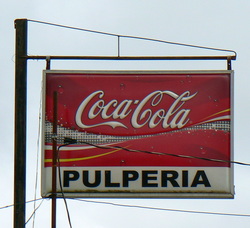 Two worlds in a forced collision... Day 16 in Ocotal June 12, 2012 With two full weeks under my belt in Ocotal, I am beginning to reframe my expectations about what ¨value add¨ could look like and I am OK with what I see. But thoughts at this time of writing are shaped by something much more mundane: a pair of old, clean and wet white underpants brought to the table of a company picnic and a discarded, pale blue party dress used to wipe the face of a child. Both acts completely natural, with no forethought other than an immediate need for a rag in both situations - and both worked just fine. And I thought about how the lens we use shapes our reactions to what we experience, what we see (and choose to see) and how we react to it. 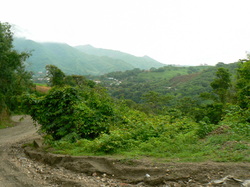 Not untypical stretch of road en route to Quilali Last week, we drove about 7 hours to deliver a 90-minute workshop on citizenship in Quilali, a small, country town in Las Segovias high in the hills along a road that is sometimes paved, sometimes not but pretty much always steep and rough. Gorgeous countryside, sadly marred by huge tracts of deforestation. There is a lot of finger-pointing for this travesty: locals blame the Americans, pro-liberal websites blame over-generous and poorly managed rights given to foreign companies by the government, partly out of a real necessity to repay debts and ensure investment dollars. In addition, the situation is compounded by the local population since most cooking is done on wood-burning stoves and land for agriculture is essential in a rapidly growing population. Add to this the need to push the coffee plantations further and further up the mountain to find the cooler climate the crop needs (i.e. a response to global warming) and you have the recipe for disaster - complete deforestation in 20 or so years at the current rate of 1.5% per year. Only 20% of Nicaragua is currently covered by rain forest, the largest tract in all of Central America. 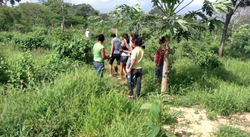 Tree planting on the campus of ILLS This is probably why the institute (ILLS) where I am volunteering is planting trees around it's buildings: nature's air-conditioning and a reminder to its students that their leadership includes care of the evinronment. Click on he photo to the left for a short video showing some of the students planting trees. But back to our trip to Qulali. We had to stop half-way to our destination because of a clutch that failed (little wonder on these roads). While our driver took a lift with a friend to the nearest mechanic (some 20 minutes say in the next town) we waited and drank coffee in a local store - coffee is brought out at every opportunity for guests - and I sat outside and watched the activity on the street. A rich and varied mixture of vehicles, people and animals. I have compiled a short slide show of some of the shots at this link: the remains of a broken egg for a dog's breakfast, a branch to replace a broken stand on a bicycle, a piñata for a child's birthday, fish sold by a door-to-door salesman out of a cooler carried on his head... 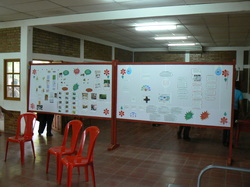 Dividing walls us between us and them We eventually got there, about 2 hours late, though this was clearly not a problem for the participants. Time takes on a different dimension in this part of the world - not that I have even begun to understand what is acceptable and what is not. I smiled when I saw the room. We were using the meeting room associated with the town hall, a strange meeting of worlds: local politicians ultimately controlling the municipal budget, a group of mostly indigenous citizens and a non-profit instiute teaching the citizens how to demand their rights for information and budget oversight. Strange bedfellows. And I chuckled when I saw the wall separating us from the town politicians meeting in the same space. Hardly up to a professional US-company's standards for sound-proofing, but completely acceptable and normal in the context of a training session in Quilali. And I thought about the conversations and complaints I had overheard in my time in my old job and I smiled. It all depends on the lens you choose to look through. 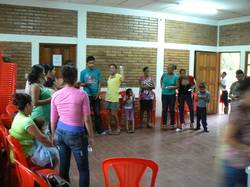 Participants at our workshop I changed the lens again when I watched the participants. An enthusiastic group of women, a few men and a smattering of children (lovingly called "chavalos" or "chavalas" in Spanish). Between breast feeding, a screaming child, the meeting "next door" and the coming and going of local town people in what is essentially a public space, I thought about my frustrations with trainings in luxury hotels in city centers: participants who are tethered to a Blackberry as though their life depended on it, banquet staff interrupting to bing in bottled waters or chairs that don't have wheels...and I am glad I am able to change the lens, if only for a while. And I wonder how long I can hold on to this different lens. The group has been meeting since November. The overall workshop goals are increasing citizen participation and oversight of the municipal budgeting process, with connections to the rights of women and youth and access to information. And the facilitators and institute are serious about teaching this in a nonpartisan way. 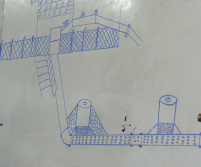 The "pozos" in the river Like the best designed training programs, we had a perfect situation to apply the new skills of carrying out a social audit of a budgeted project of the municipality. The incomplete installation of a drinking water supply. Water is drawn from the river, pumped to a filtration system and pumped into a huge tank on top of the highest hill close to the town. In a country as wet as Nicaragua, no matter whose lens I use, I can not fathom that only 60% of the rural population has access to water (almost half of the polputaion lives in the country) and only 27% of those households have running water. 0% of the rural population has access to a sewage system. In the middle class house I live in, we get water 3-4 days a week and store this in a huge vat in the garden. Clothes are washed and the garden watered on those days when we get water. As usual, the conversation about the water supply was rich as we brainstormed what steps should be taken to complete the social audit of the town councils performance. A follow-up session was agreed to role play the meeting with the town council. for next week. And the citizens expressed their side of the story (they just want the water they were promised). And the engineer told his side of the story (pointing fingers at the people who constructed the "pozos" that are used to draw the water from the river bed) and a relatively rich farmer's wife expressed her opinion over a cup of coffee in her very middle class house (blaming the whole thing on corruption of the very officials we had been sharing our training room with, on the other side of our "air wall"). So many lens... 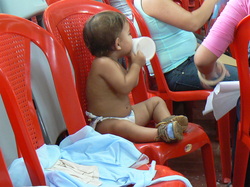 But I should really come back to that discarded, blue party dress and someone's recycled underpants before I close for the evening. The dress (in the picture on the chair to the right of the child), discarded because of the heat and used to wipe her mucky face after lunch. And the tidy-whities brought out to wipe our hands at the end of a meal to celebrate a birthday and my arrival - in the yard of one of the institute's team (a veritable feast cooked on wood burning stoves, covered against the incessant flies, served by a local cook who does the rounds of social events). A party dress and underpants - two gestures with which I am both charmed and fascinated, at least while I use my current lens. 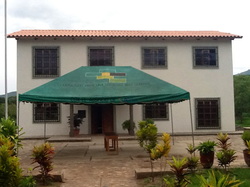 Main administration building of ILLS Day 5 in Ocotal June 1, 2012 There is a Bhuddist saying that goes something like this: "When the student is ready, the master appears." I am not sure I know what "ready" looks like, but I have a sense that a master has certainly appeared, or rather a series of masters. In Spanish the word "Maestra" has none of the contemporary connotations associated with "mistress" in English, and since most of the "masters" are women at the Instituto de Liderazgo de Las Segovias (ILLS), I apologize for this shortcoming in English! At the institute I am volunteering for a team of dedicated and strong women, and as usual, I am aware how women catalyze social change in so many countries. While I continue to learn about the goals of this young institution, my first exposure is to observe a workshop designed to help community leaders participate in local government so they can leverage relatively new (2003) legislation about citizen participation in local development and infrastuture projects. This a textbook casestudy in democracy in action. I, sadly, have never participated as a citizen in any government, having always been a foreigner in someone else's country since the age of 18. A "resident alien" in the USA for almost 25 years until last July, I will be participating in the upcoming elections as a citizen for the first time (albeit via Email). And it is strange that I am getting my first real lesson in citizenship in the poorest country in Central America where the issues faced by these community leaders feel both both immediate and on a human scale, for example: a bridge that will connect two halves of a community that straddles a river in both the dry and rainy season, or; providing drainage channels on the sides of roads so that they are not washed away by storms, or; the provision of latrines. The sorts of things that I have never had to think about in my life can seem overwhelming and out of reach to a population that has none of these basic facilities. And I learn. On another morning, I join a search for pictures of a group of children with various physical disabilities who had received medical attention from visiting Spanish surgeons in 2010. These doctors wanted to learn of the progress of the children as they plan their return. Since no obvious organization seemed to take this task under its wing, it fell to the masters of the institute to do some sleuthing to track them down. Fortunately, an organization that provides for mentally and disabled children - Los Pipitos - had many of the photographs we needed. For the others, we would need to track the addresses from the local hospital and go out and take photos. No simple task. There is only one hospital in the region for more than 200,000 people. 200 beds, many of which are frequently shared by two or three patients. Thanks to immaculate patient records, all hand-written (no computer is used in record keeping), we track down every address we need for the 6 or so remaining children. And I think back to a training solution I co-designed for a major US provider of patient-management computer systems and software for hospitals, and I struggle to rationalize the contrast in my mind between these two experiences. And I try to learn. With the address of one specific child in hand (i.e. 3rd house on the street SW from the dining room of the orphanage in the next suburb - hardly GPS-friendly!), we tracked our way to the house, where no one had heard of the child. Knocking on the doors of some nine houses in the neighborhood, we still found no trail to our missing child. Could he have come from one of the remote villages and stayed over in someone's house prior to and after the operation? By chance, one man had heard of the child and led us to the house. The roads, though intentional, were more or less a series of interconnected ruts between houses, clearly impassable in anything less than a four-wheeler, on foot or by an intrepid cyclist (not that we saw many!) Wrong child, but he had indeed had an operation in 2009, from doctors for a similar condition - close enough to transmit back to the doctors to assure them their work was valuable. There is a short video of the happy child at this link. En route, we talked to our guide about the condition of the road. His shrugs and resignation to the permanent condition spoke to the challenge of building active citizenship, even in a country that has known democracy for some years. Engagemet of the citizens themselves in the process, the very thing the 2003 law has as its primary focus. I had read the law, read impressive printed guides that simplified the legal text into real examples of application, looked at full-color wall planners with key annual target dates and attended a leadership training designed to oil the wheels of participation. And yet, the very citizen who stands to benefit most shrugs and lacks something they call "gestión" here in Nicaragua - a diligence to actively pursue something. And I learn some more. I had been impressed by the building and the apparent organization at Los Pipitos - a true haven in the city of Ocotal - so I looked up their site when I got home. Clearly well organized, they are the destination for an organization that provides cultural tourism and volunteering opportunities - all inclusive packages targeting for students (a minimum stay of 8 weeks work well for college vacations) and others that include language training, meals, accommodation and volunteer opportunities for relatively wealthy travelers (at $3245 for 8 weeks plus flights, it's not a cheap vacation!) I did this once, in Ghana, for just two weeks. One of the most challenging times of my life. On that trip I learned what I was not cut out to do! Though clearly a different experience, I struggle again to understand a system:
I layer into this struggle in my mind and heart the experience of my flight from Atlana to Nicaragua where at least three religious groups or 50% of the flight ("Jesus Teams" as proclaimed by one group on their bright yellow T-shirts) were taking advantage of the long weekend to "make a difference" (as proclaimed by another team's bright orange T-short). I have no idea what they paid, but I know I was offered $750 to delay my departure by one day. I was tempted. And I listen, and I try to learn and I wonder. |
BackgroundI sold house, car and most of my furniture to move to the small town of Ocotal in Las Segovias on the Honduras/ Nicaragua border. Archives
March 2014
Categories |
Contact© Copyright 2018 Richard Richards, Bournemouth, Dorset, UK
|

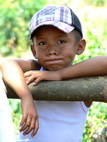
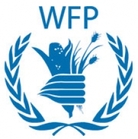
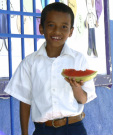
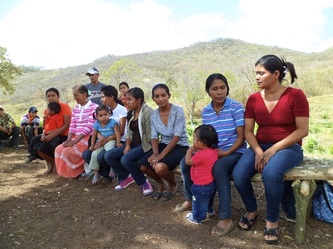
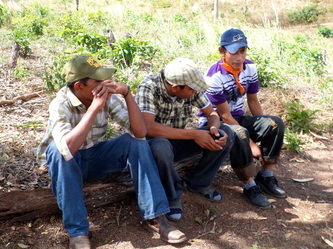
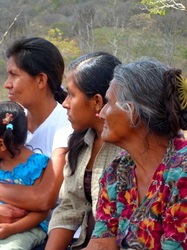
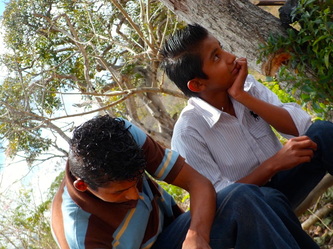
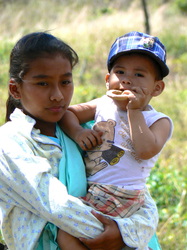
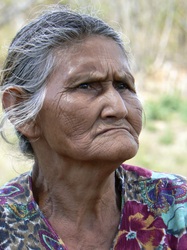
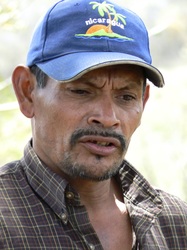
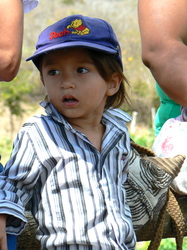
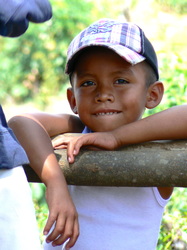
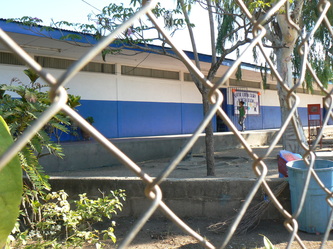
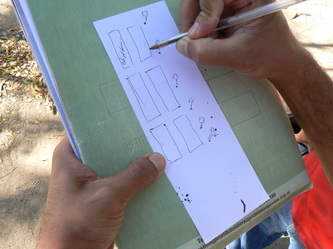
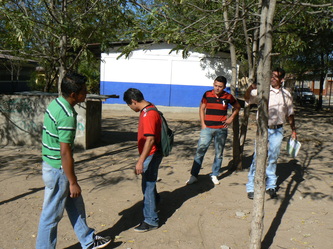
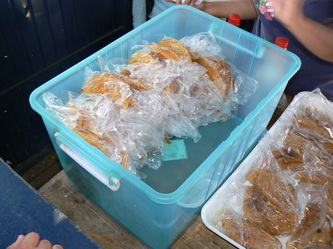
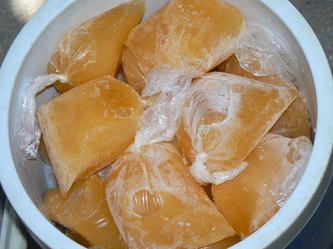
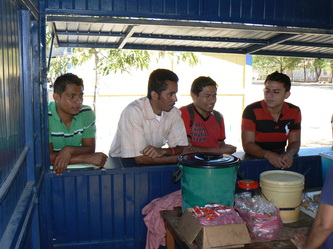
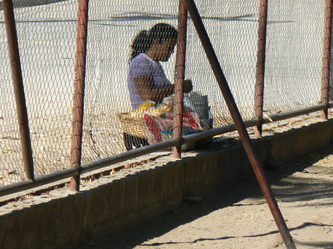
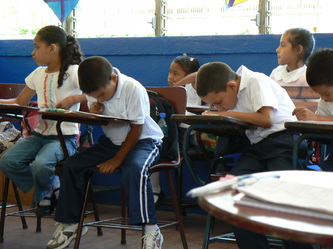
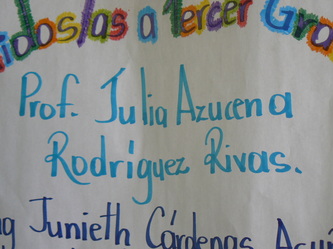
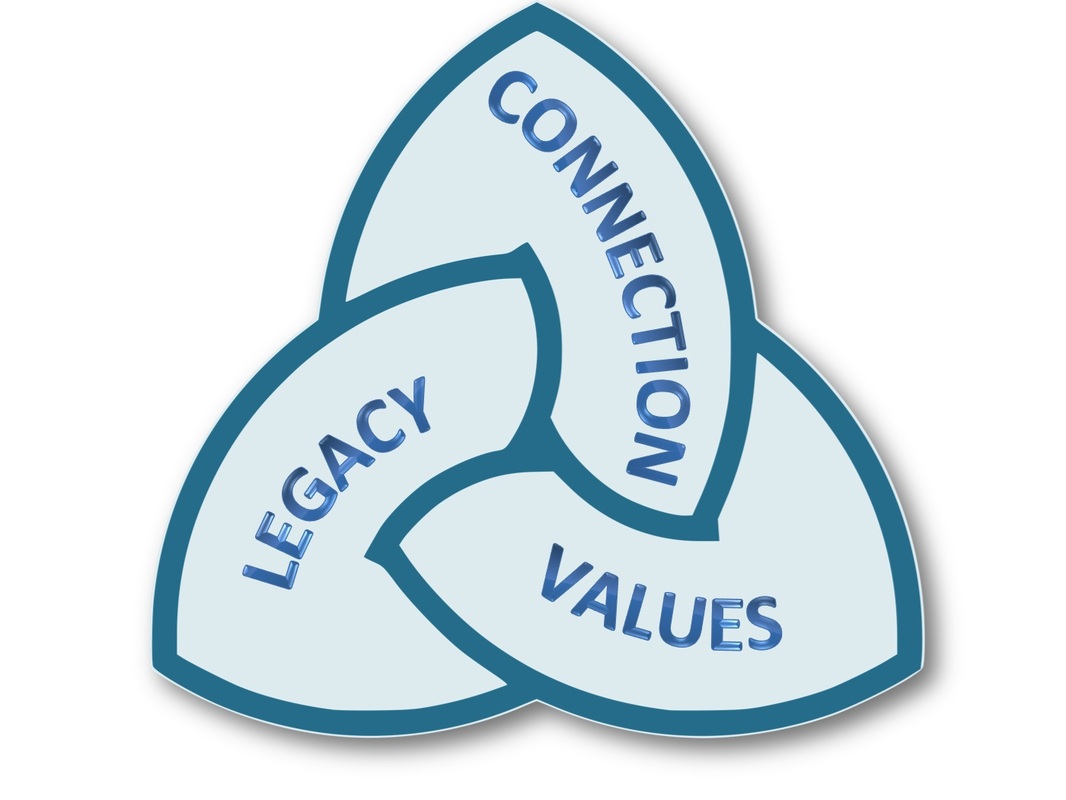
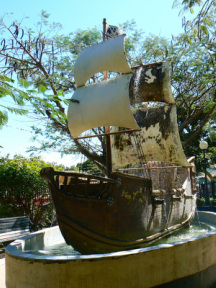
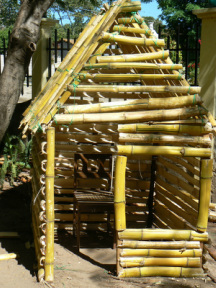

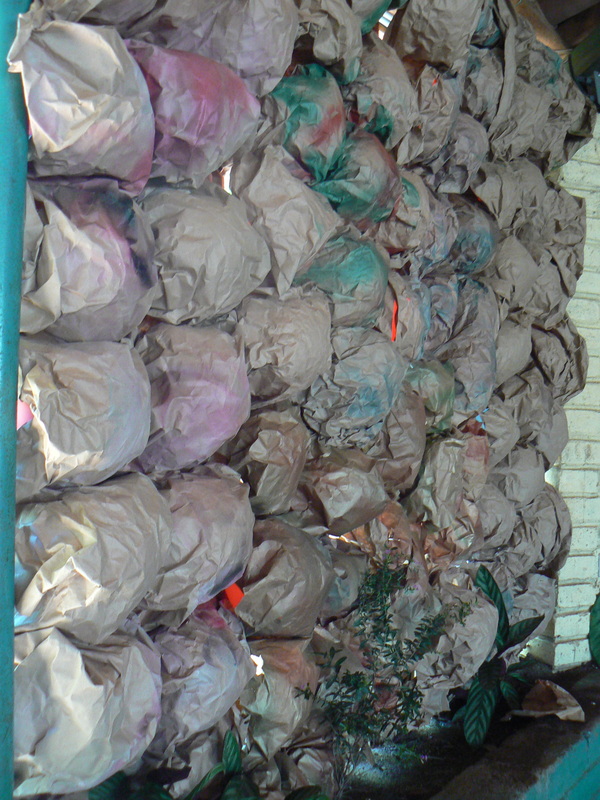
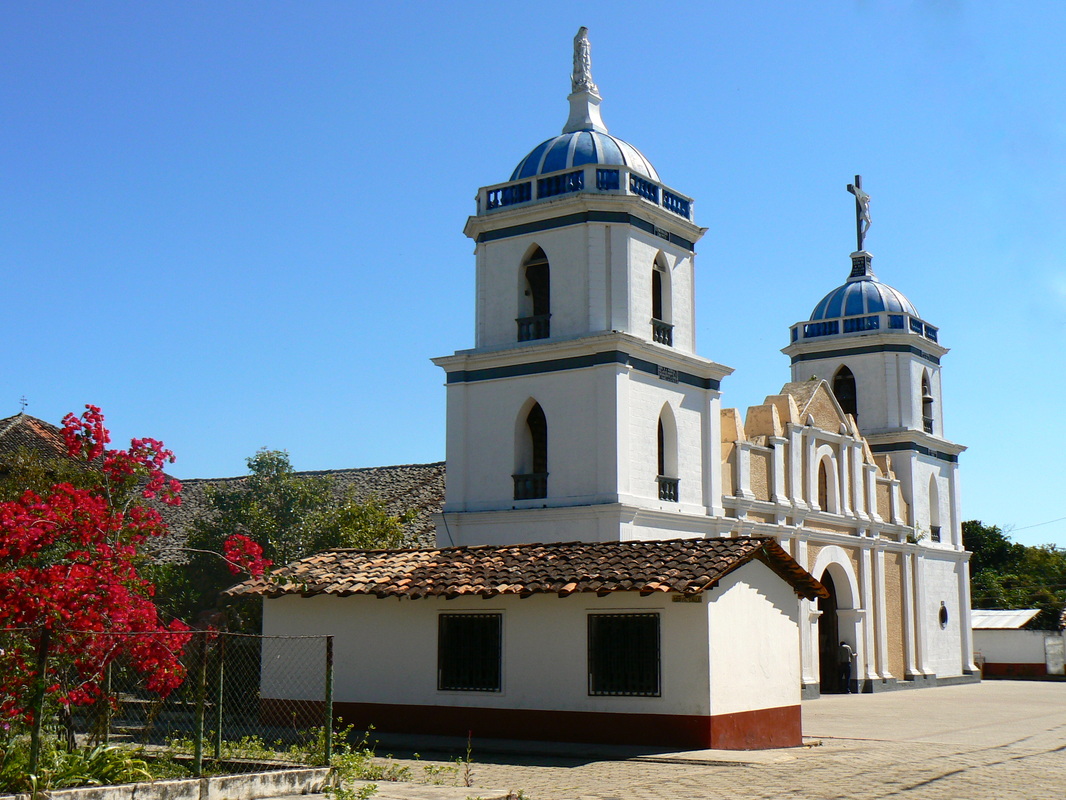
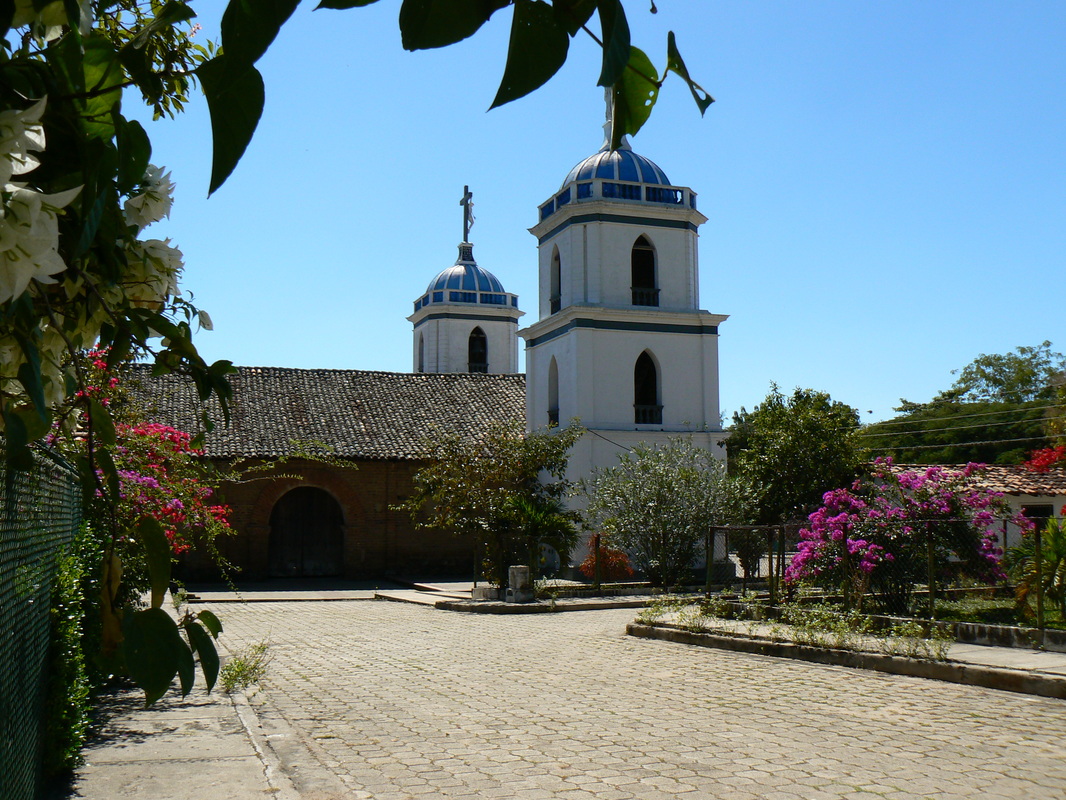
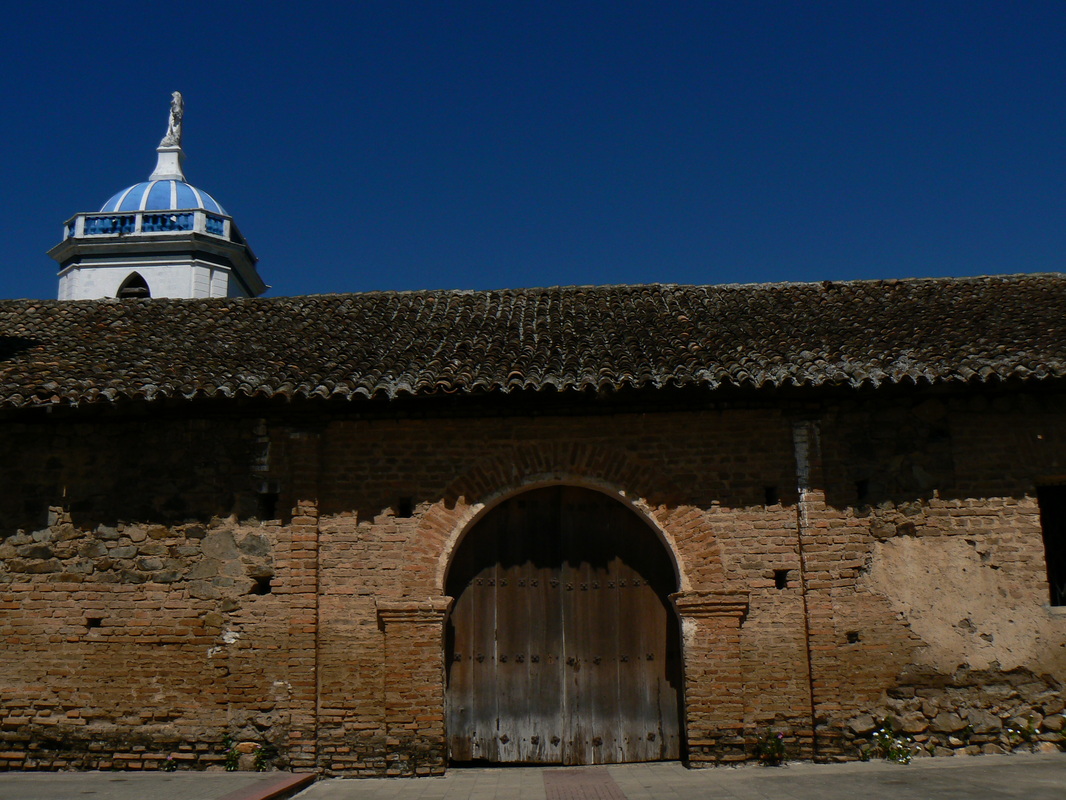
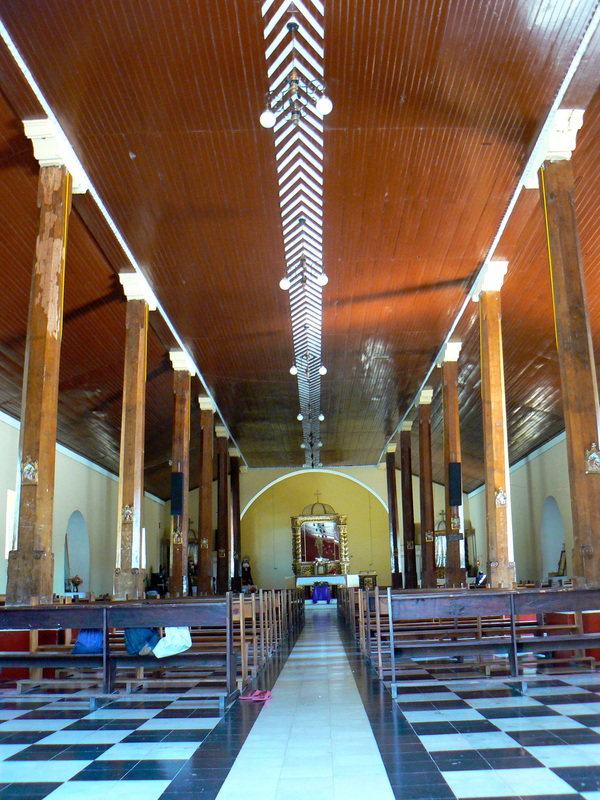
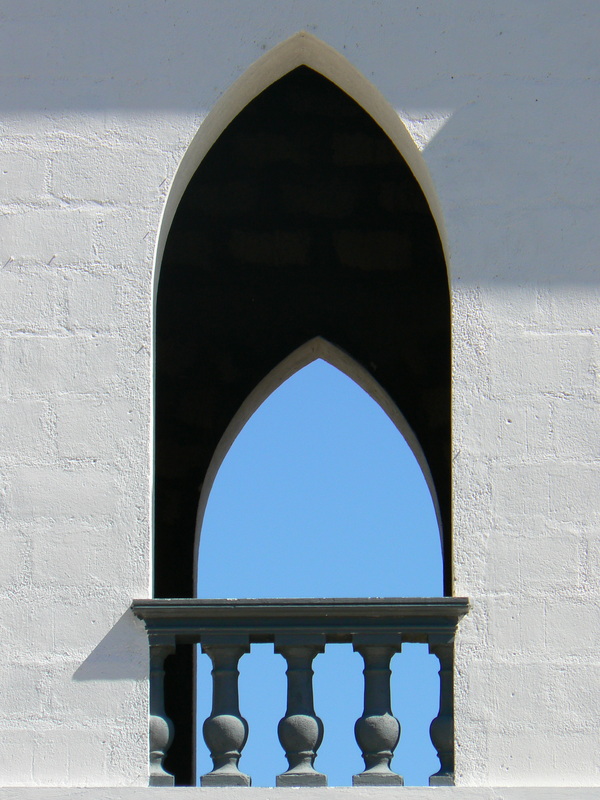
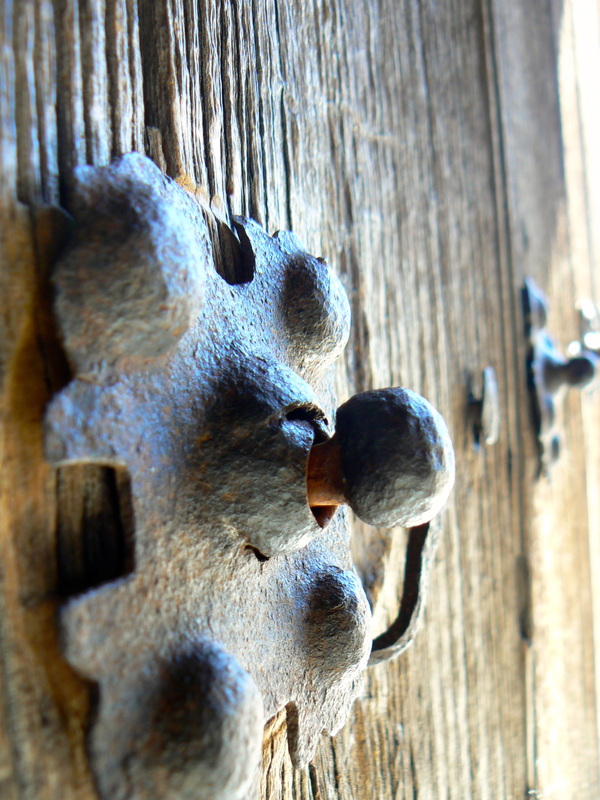
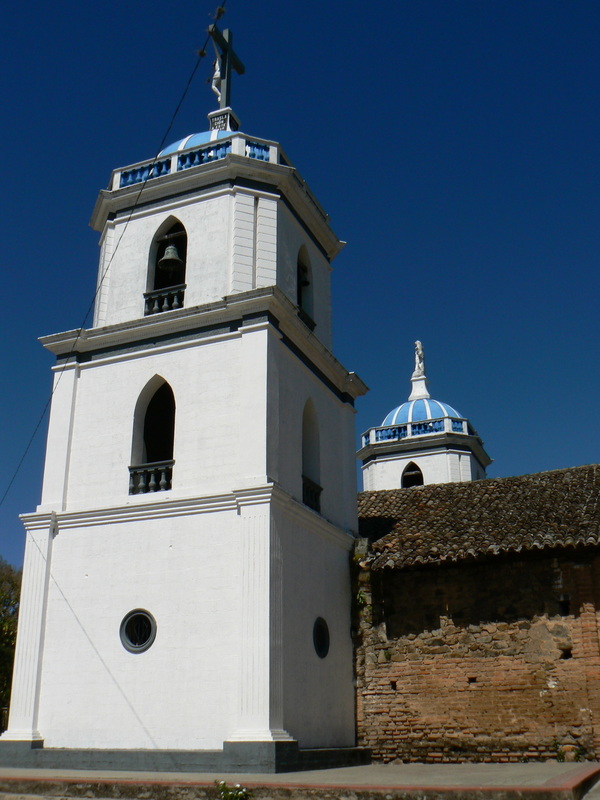
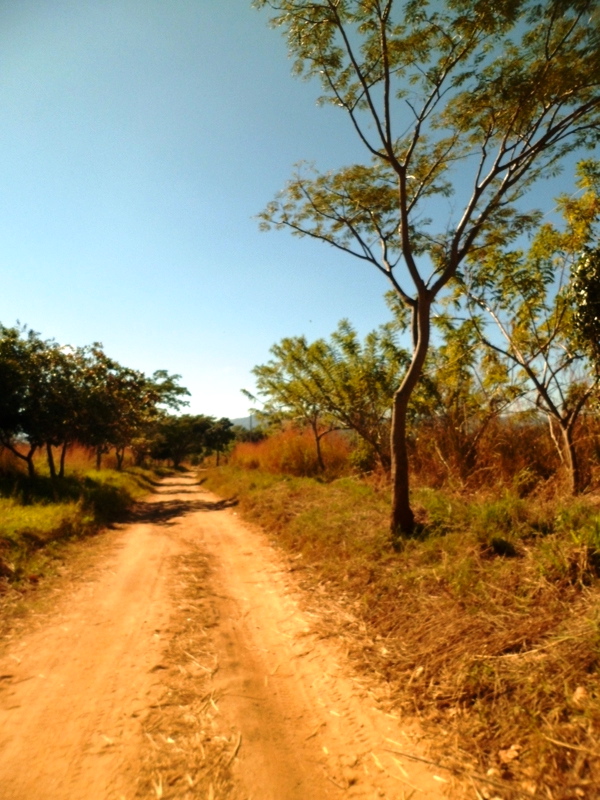
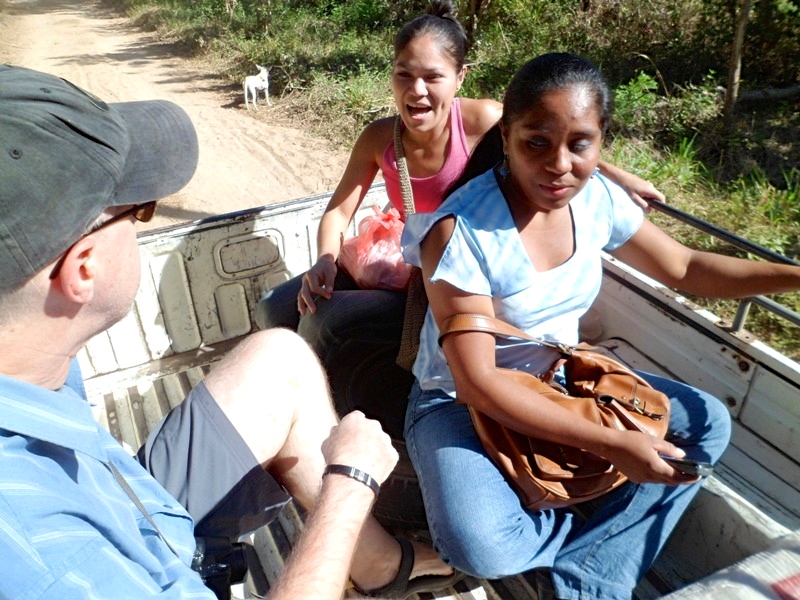
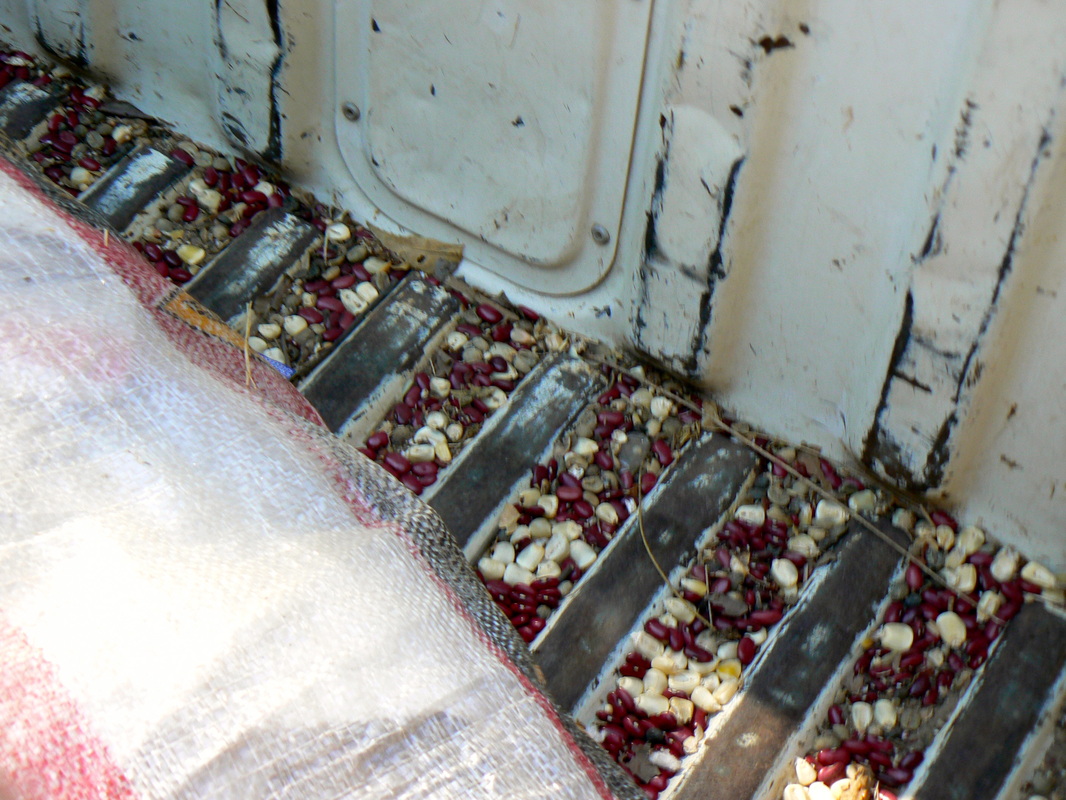
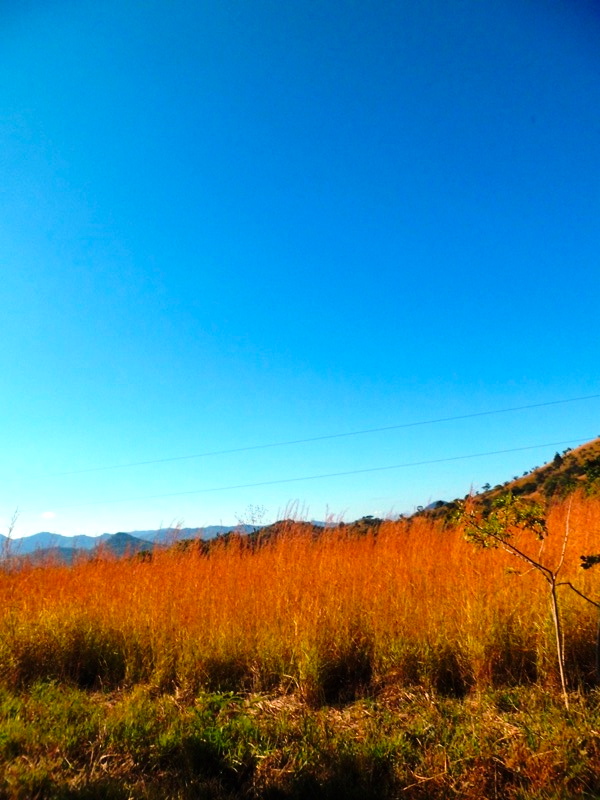
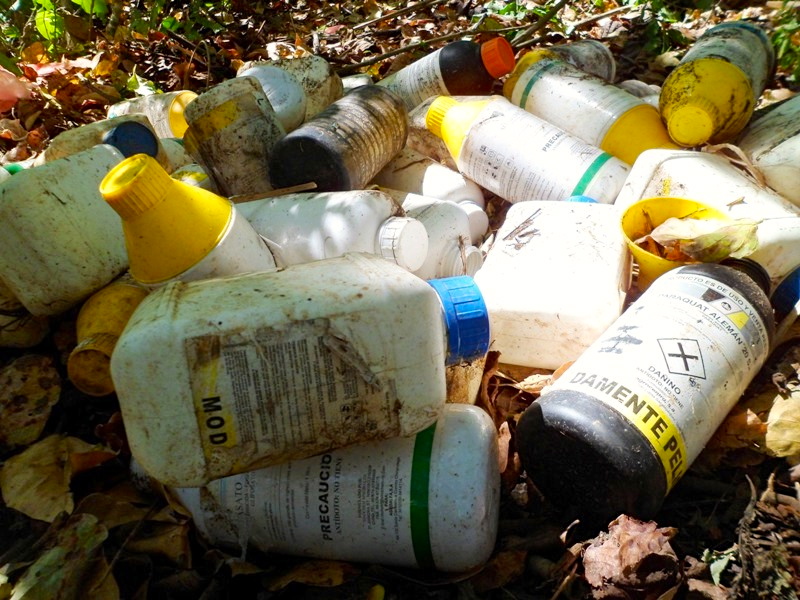
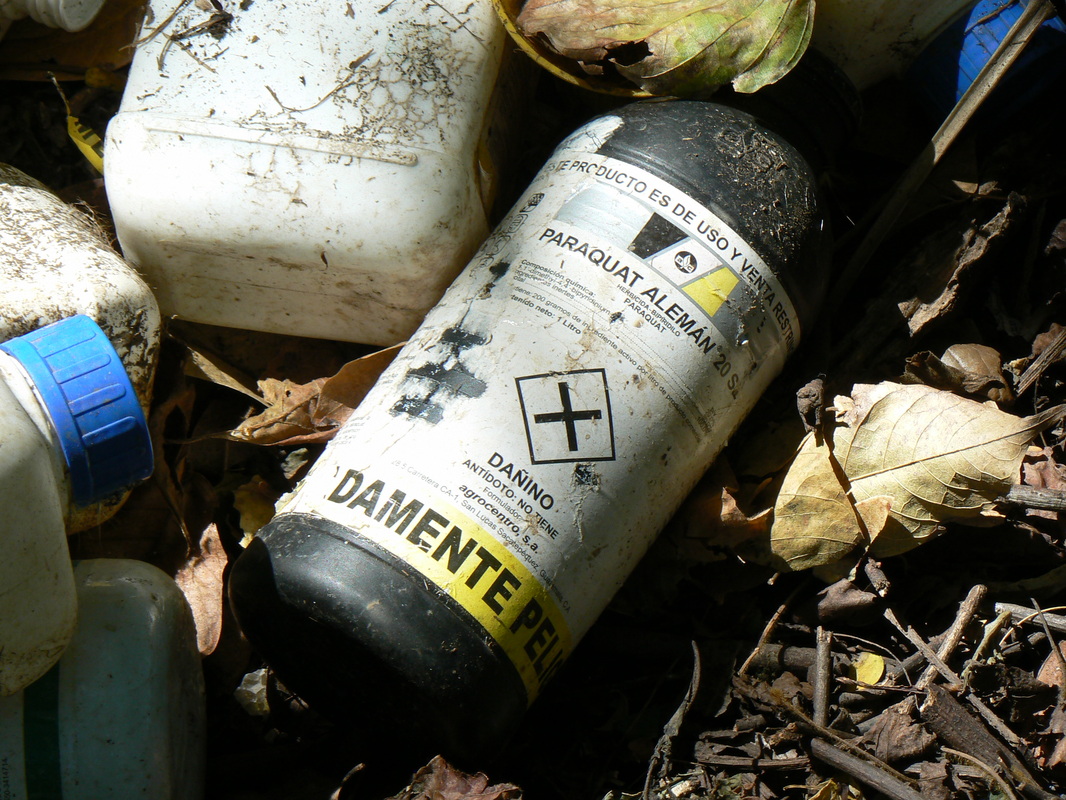
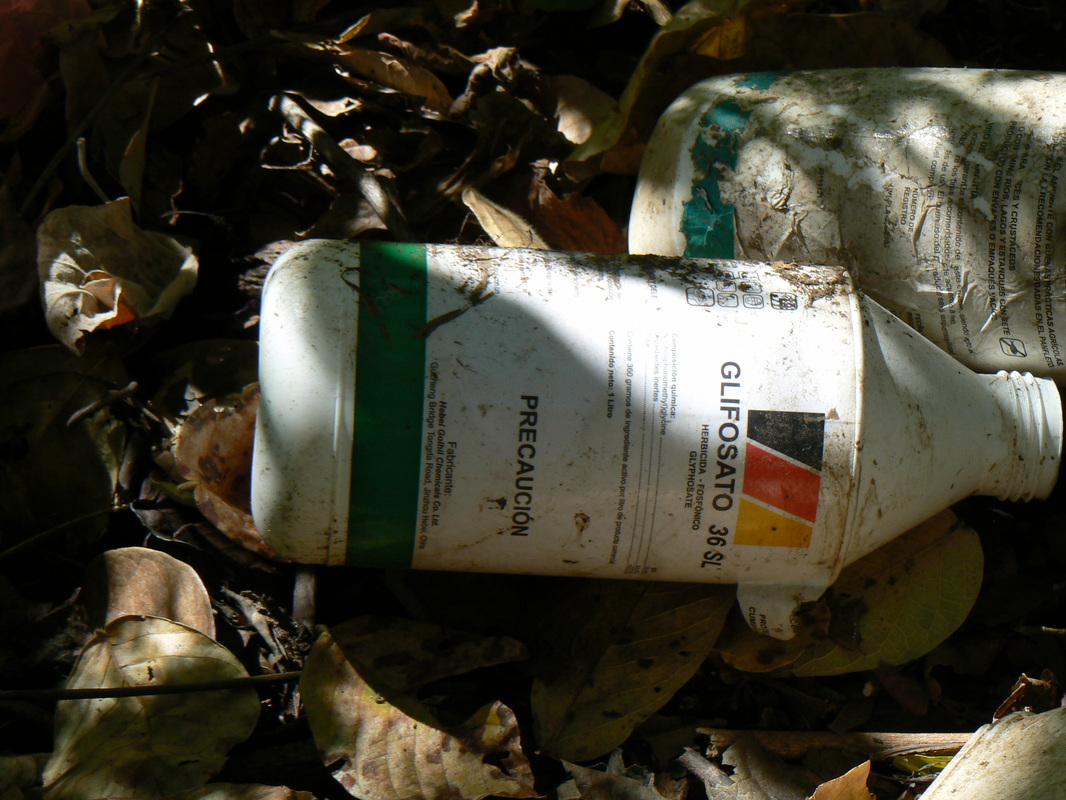
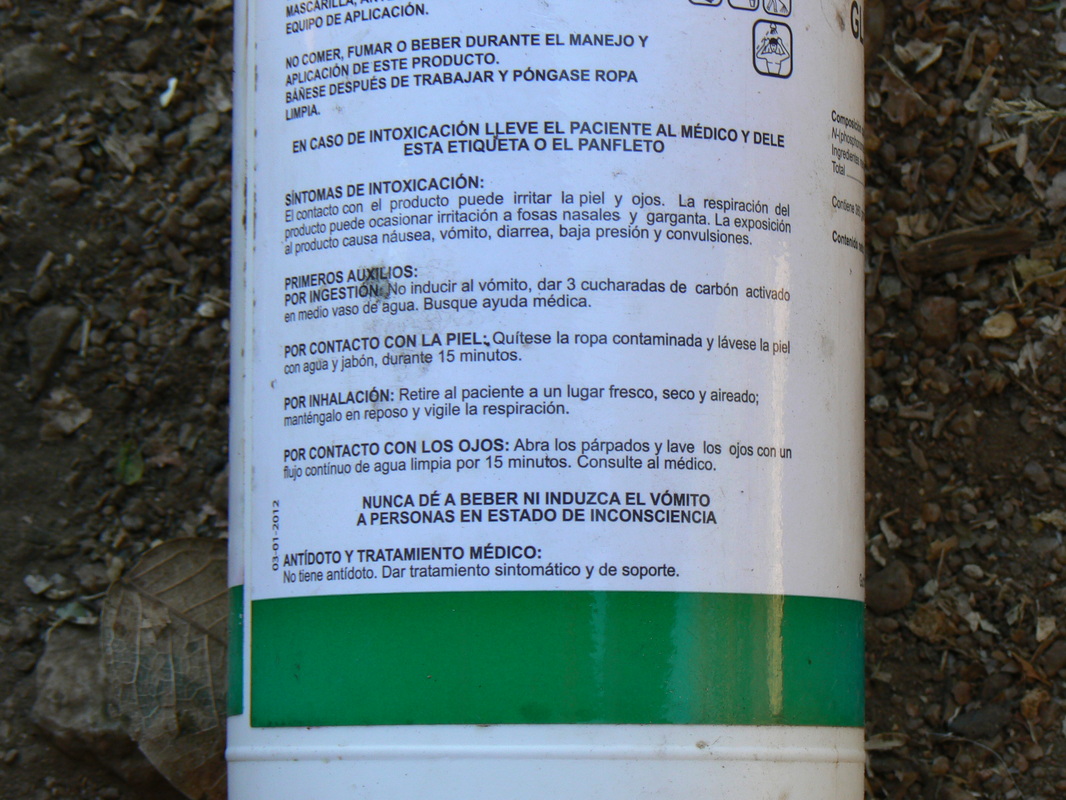
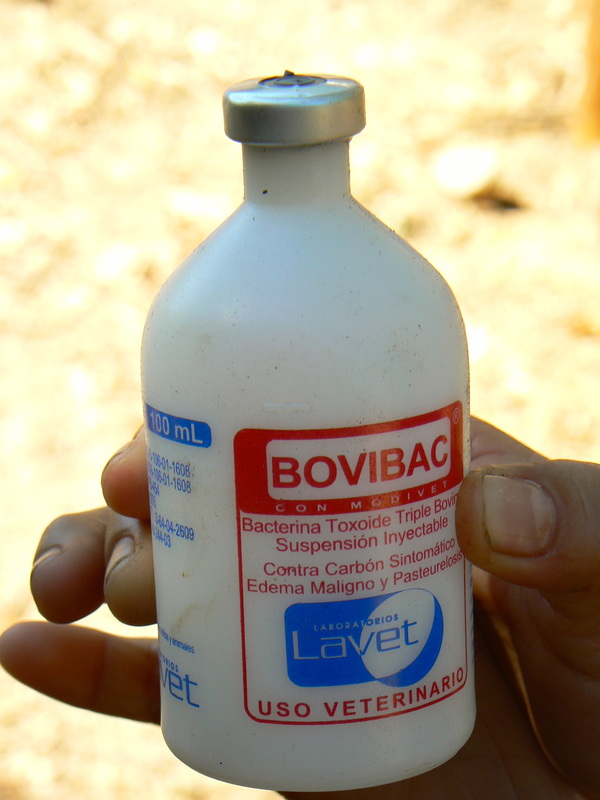
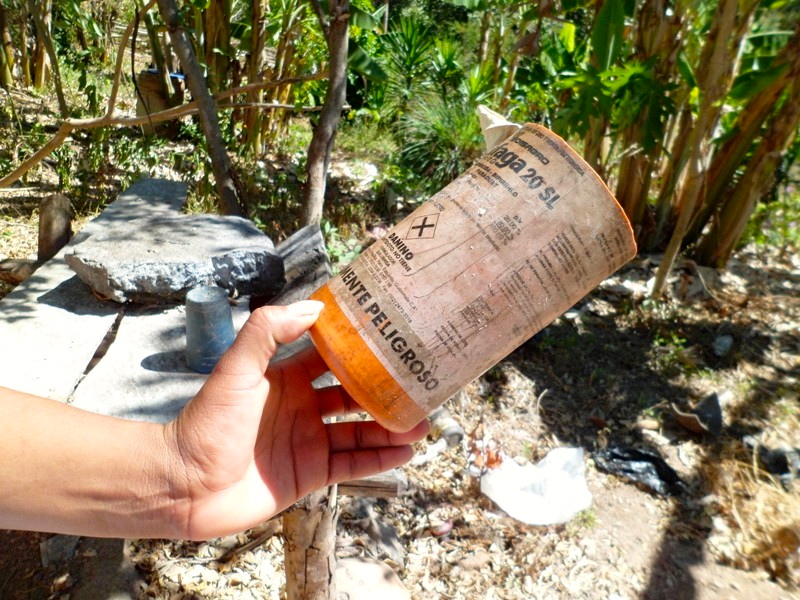
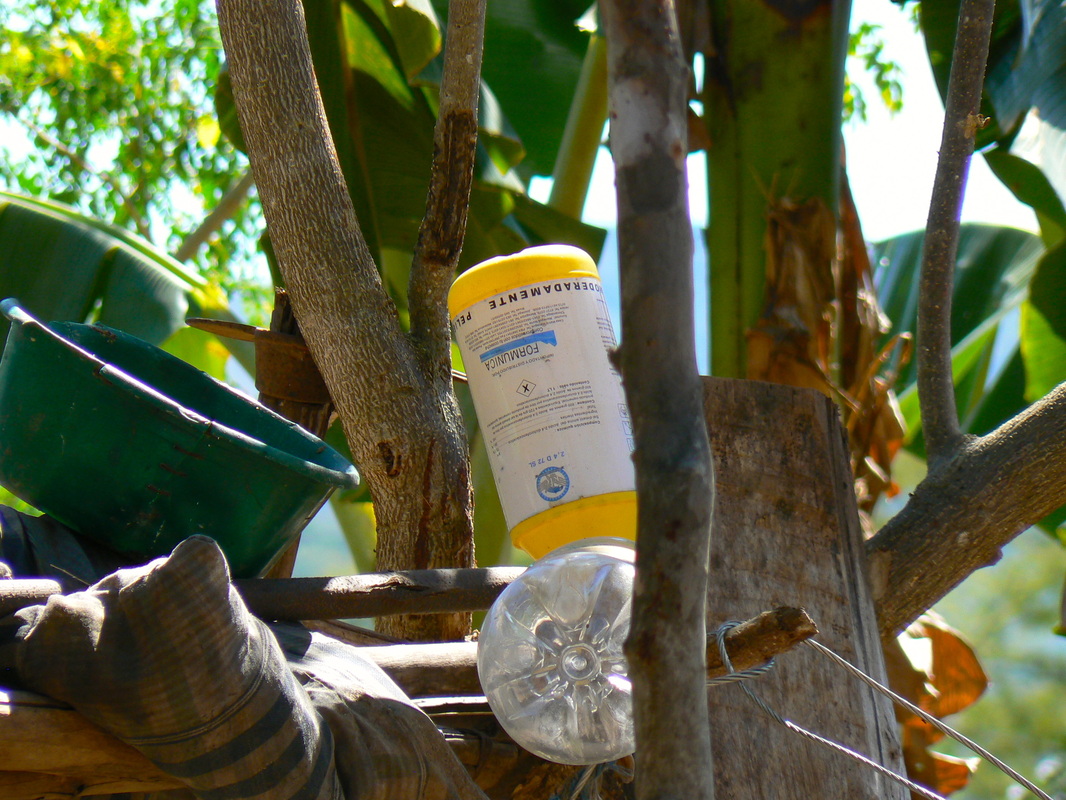
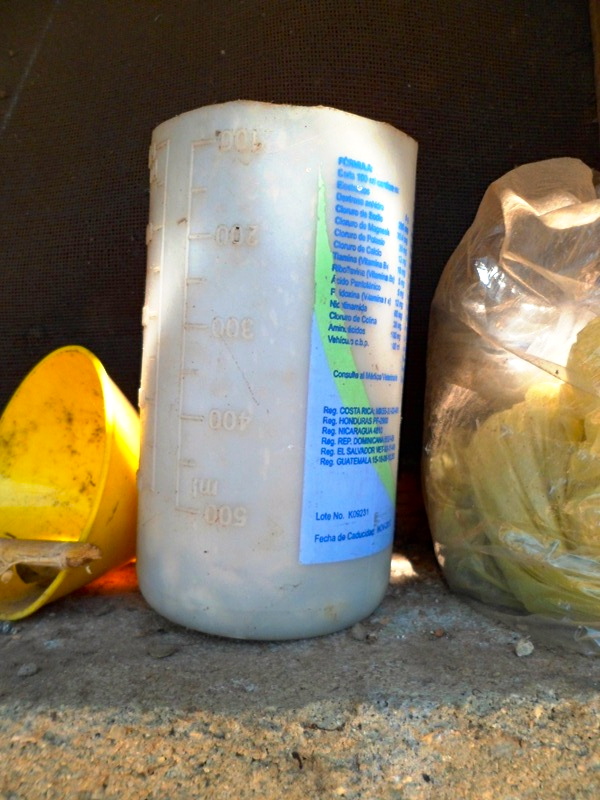
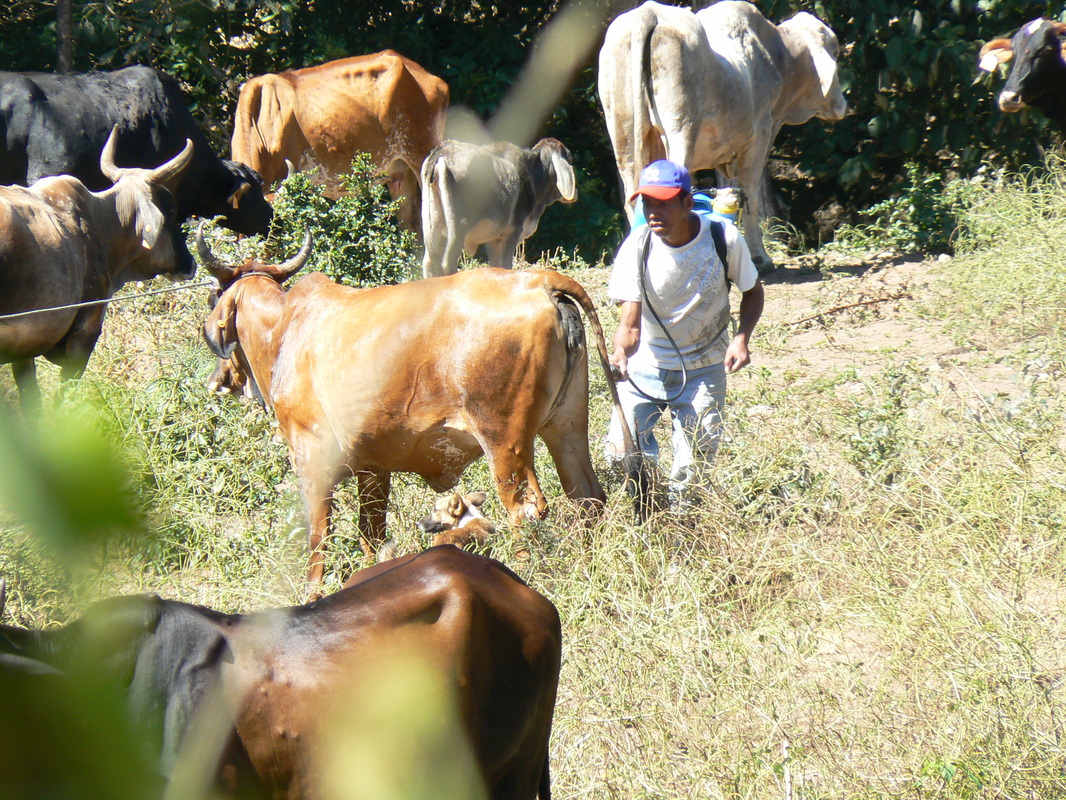
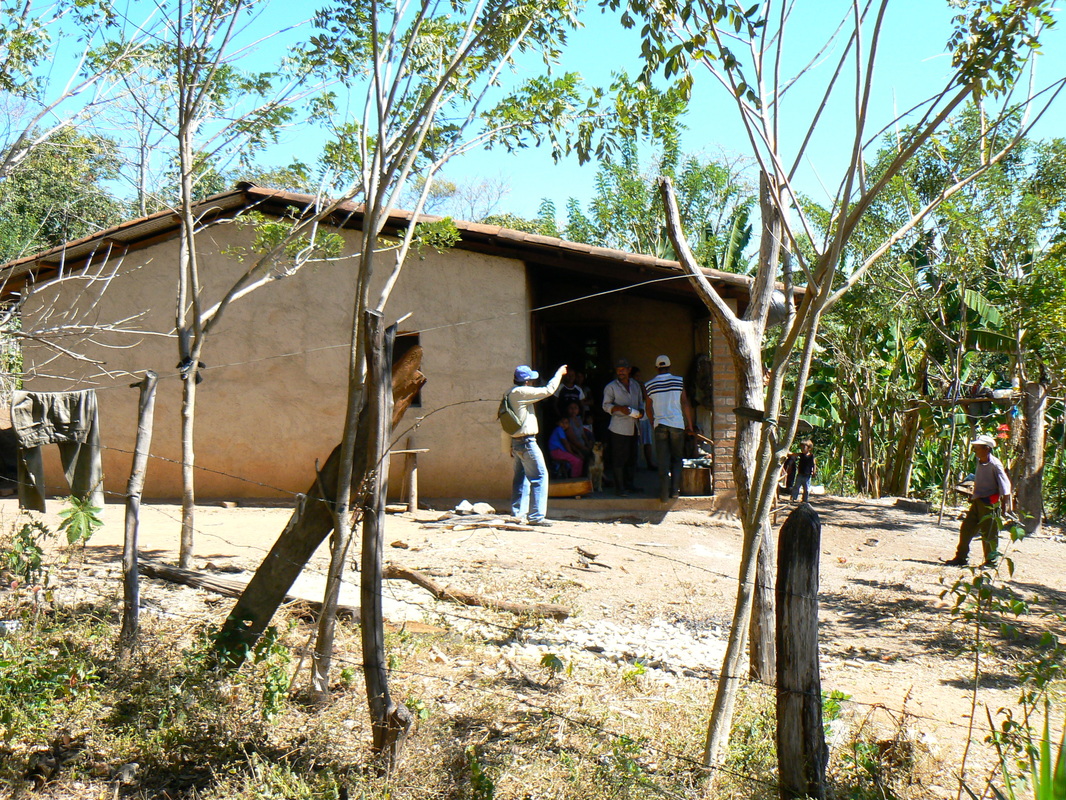
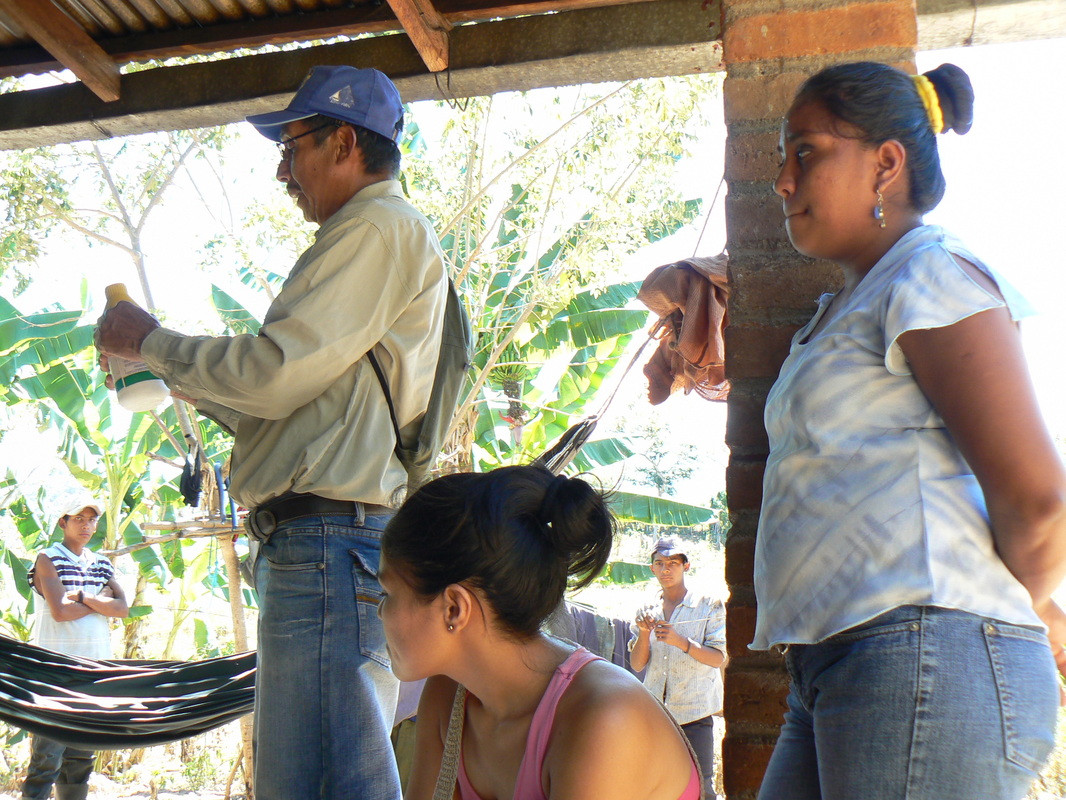
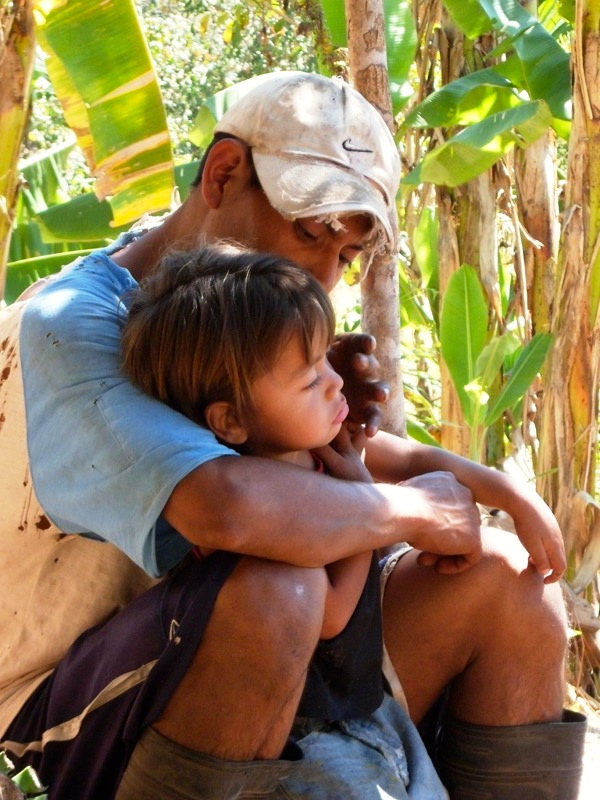
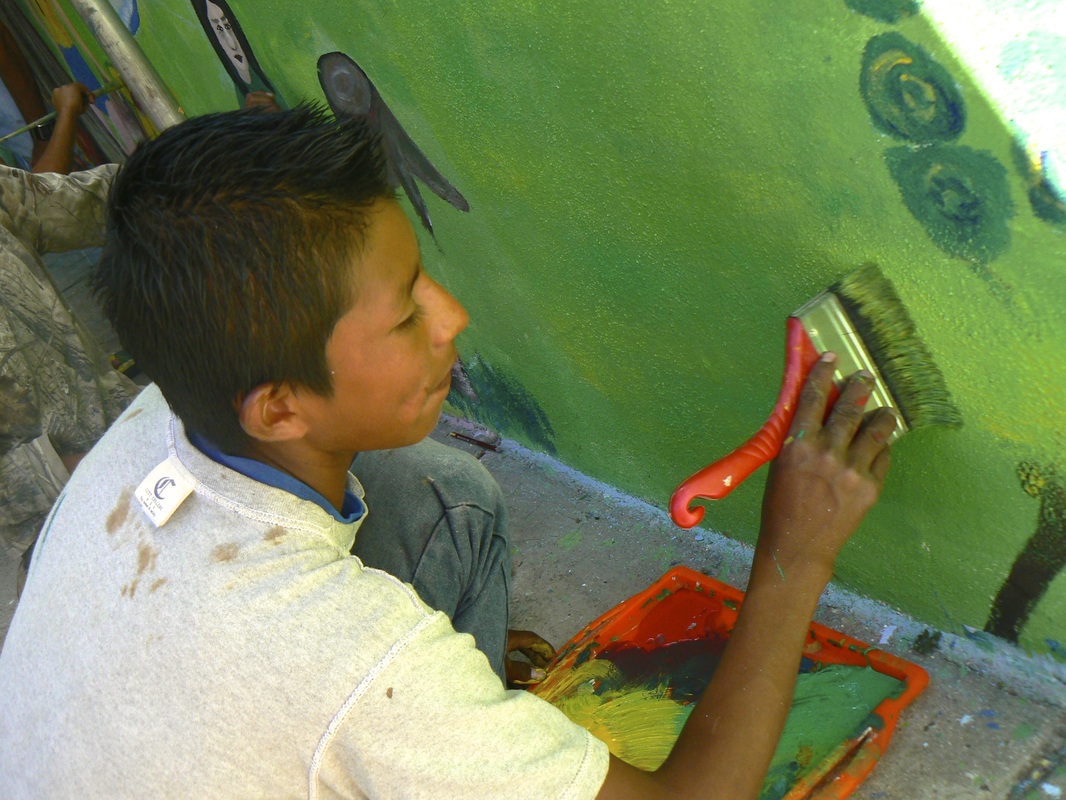
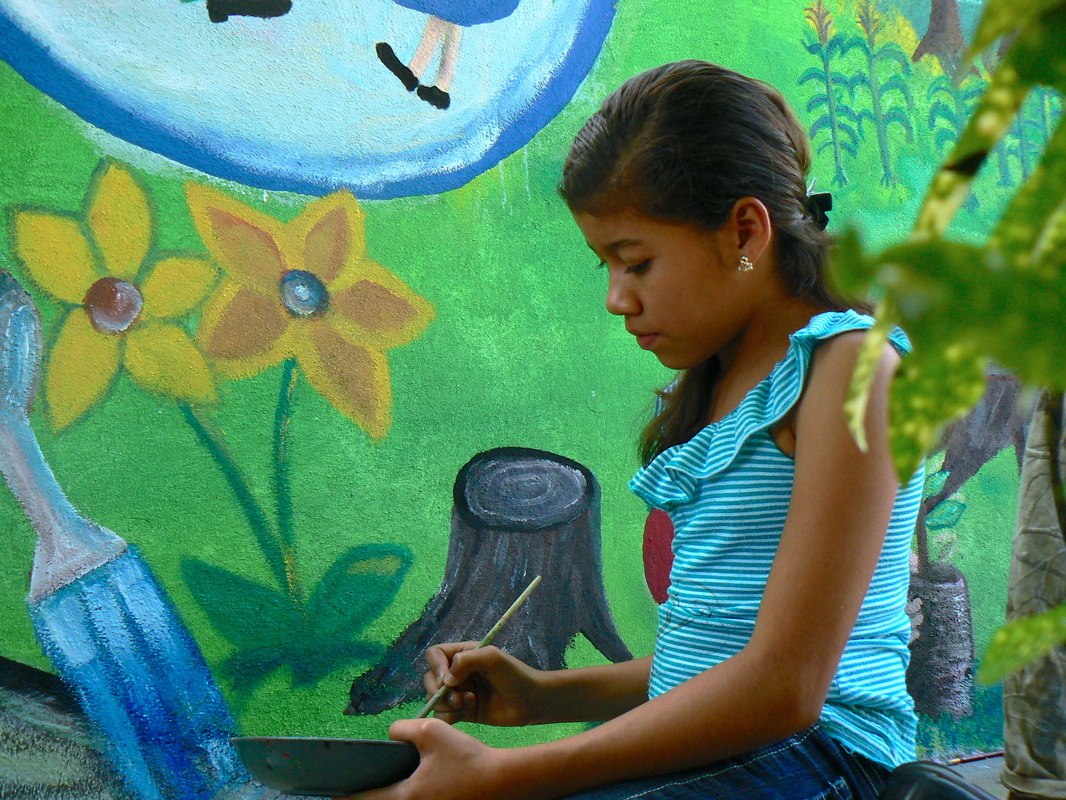
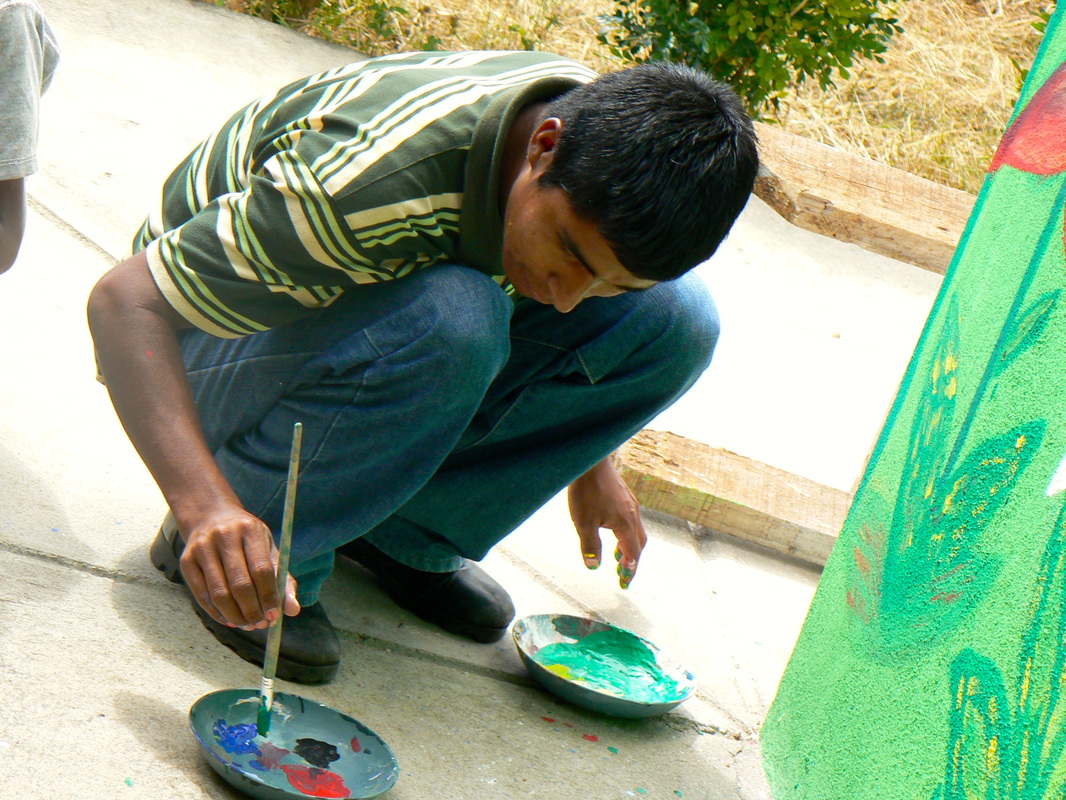
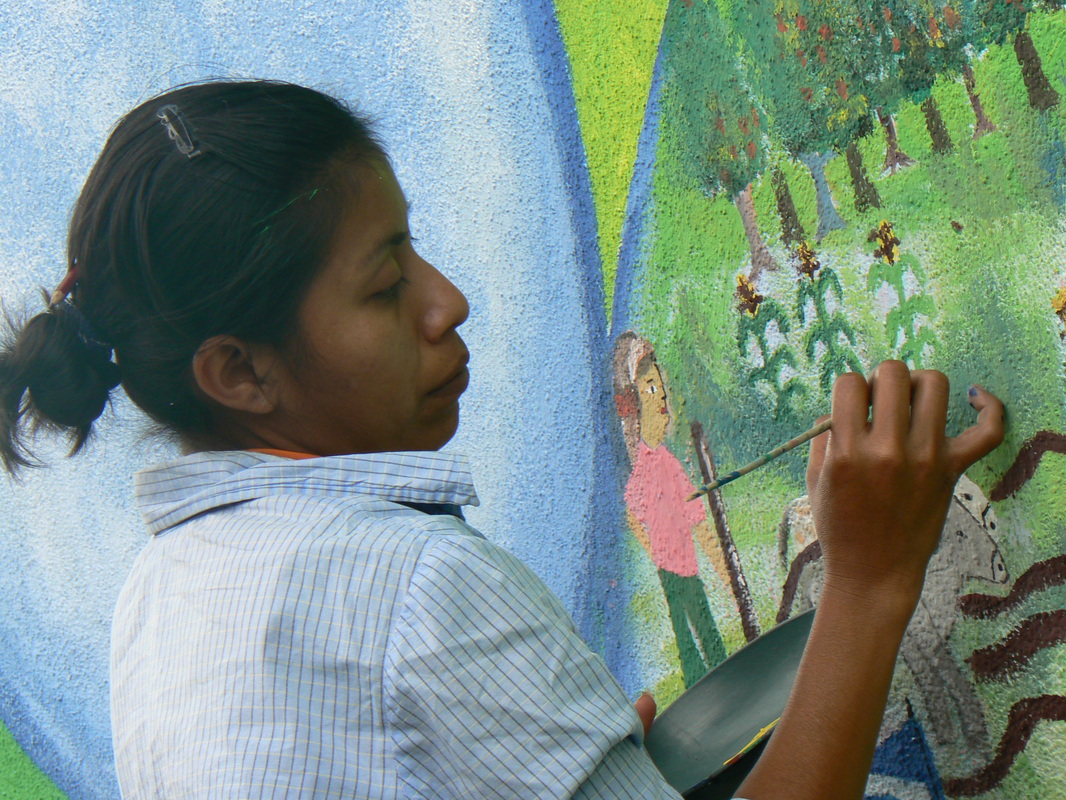
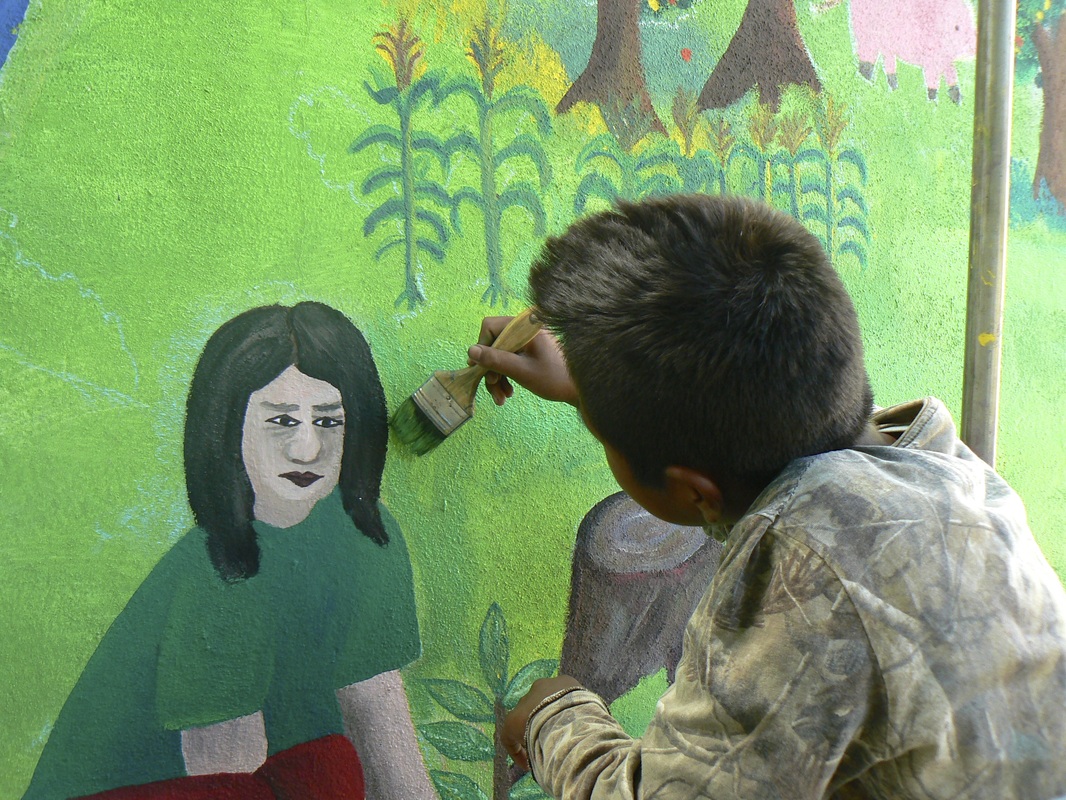
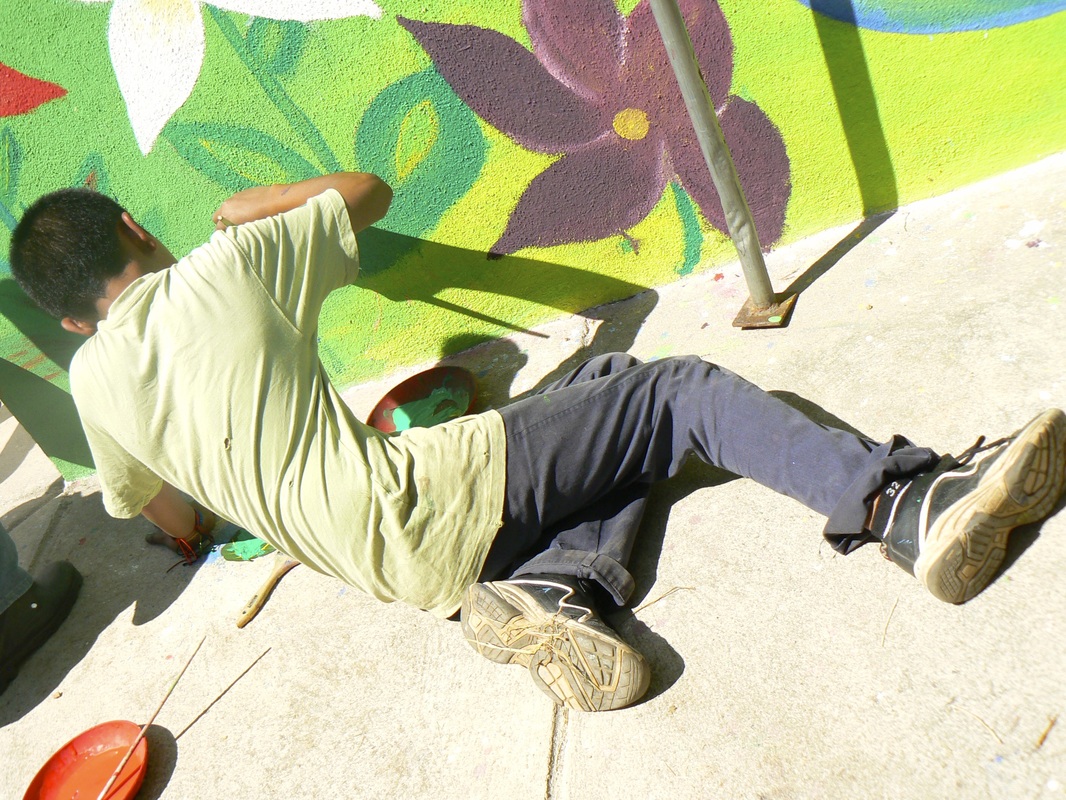
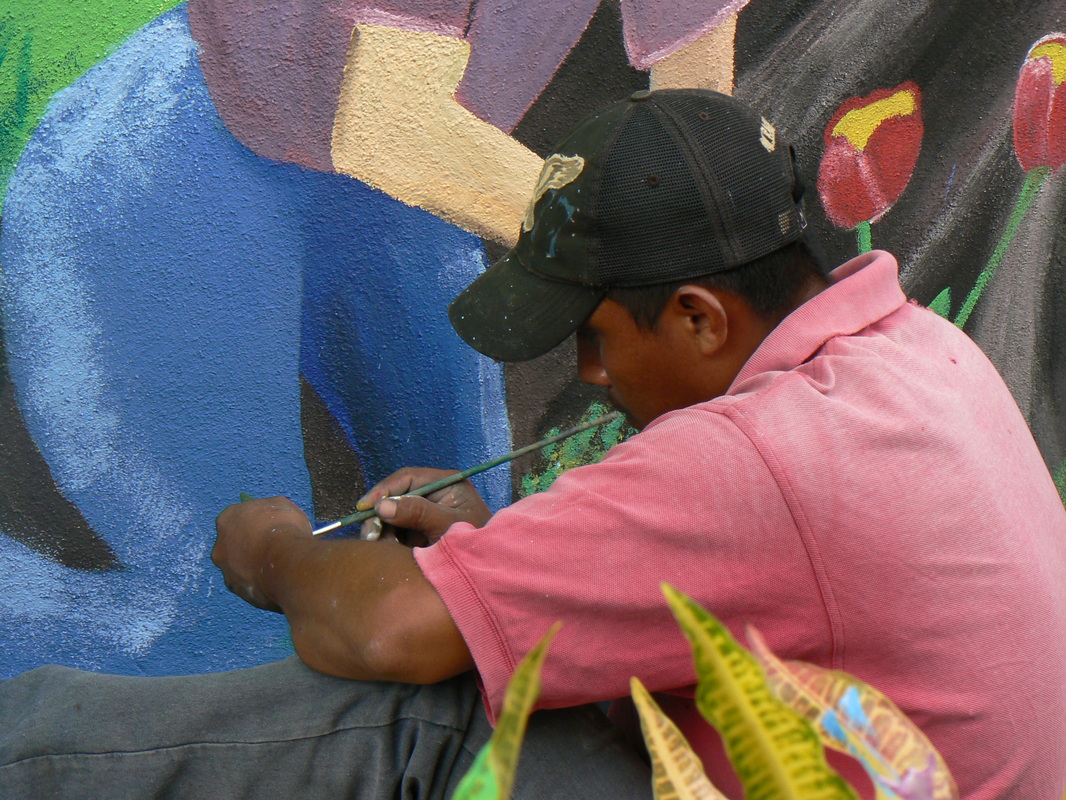
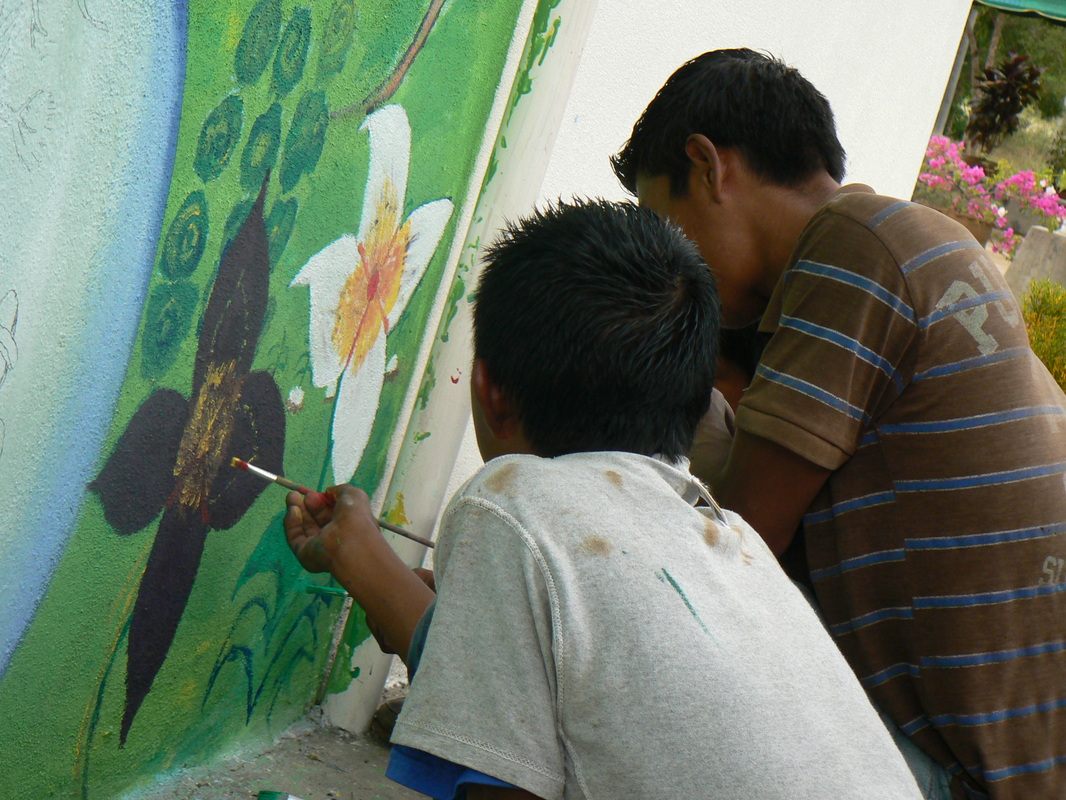
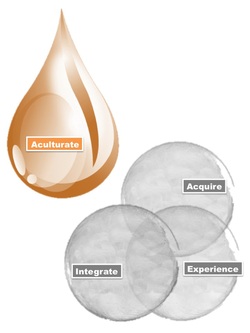
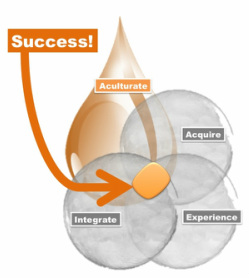
 RSS Feed
RSS Feed
